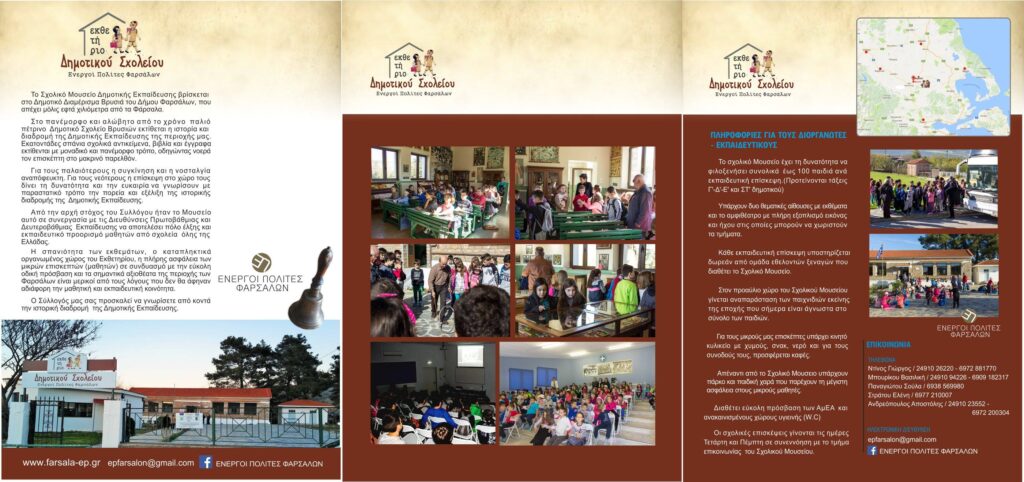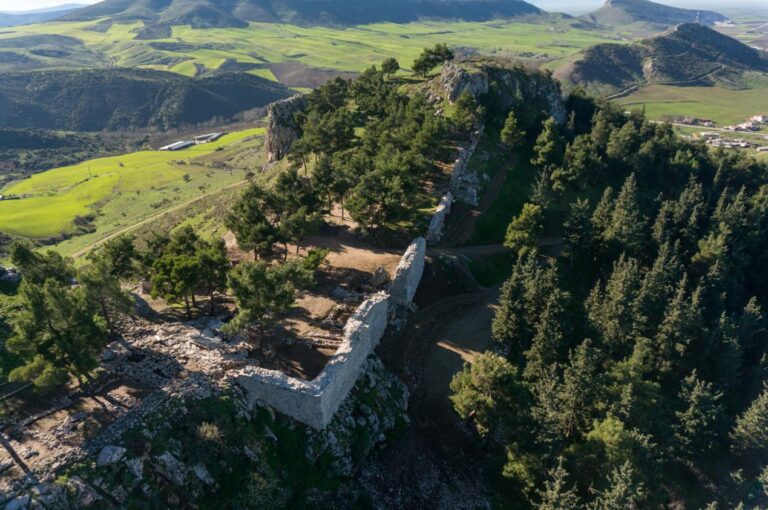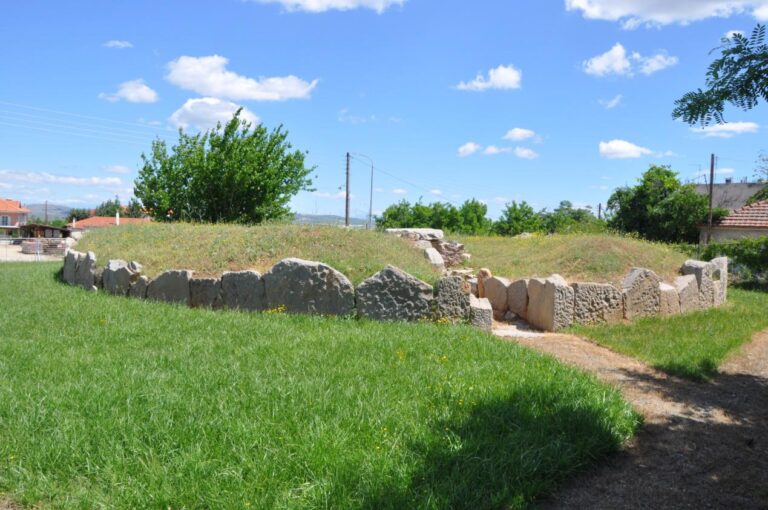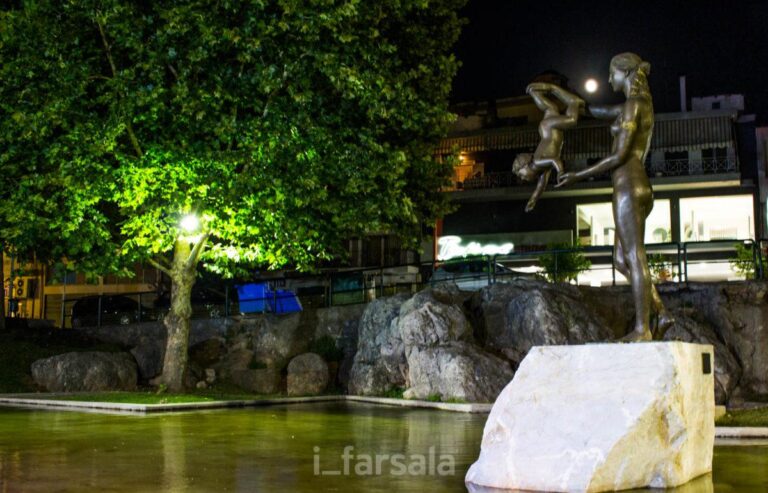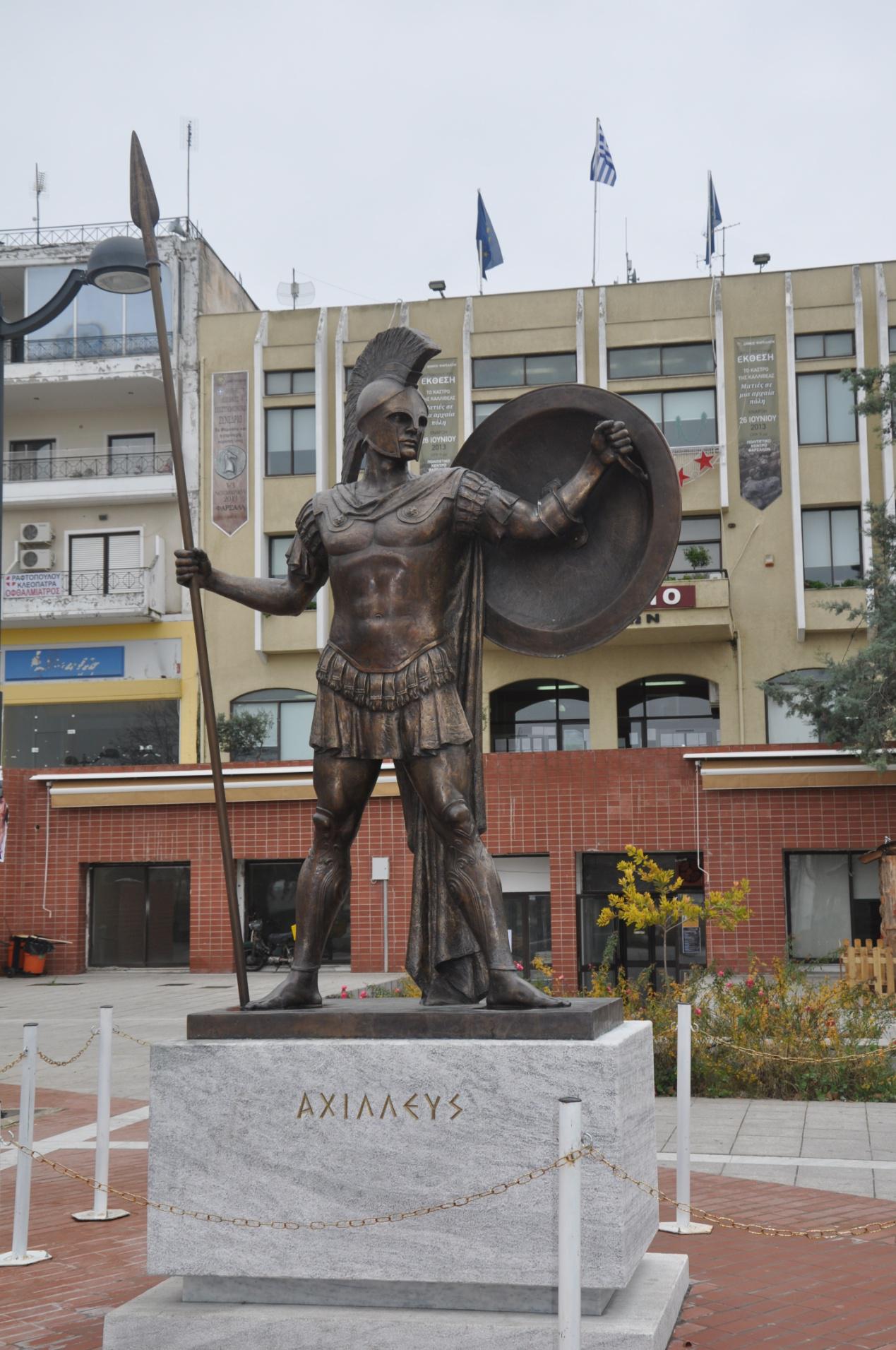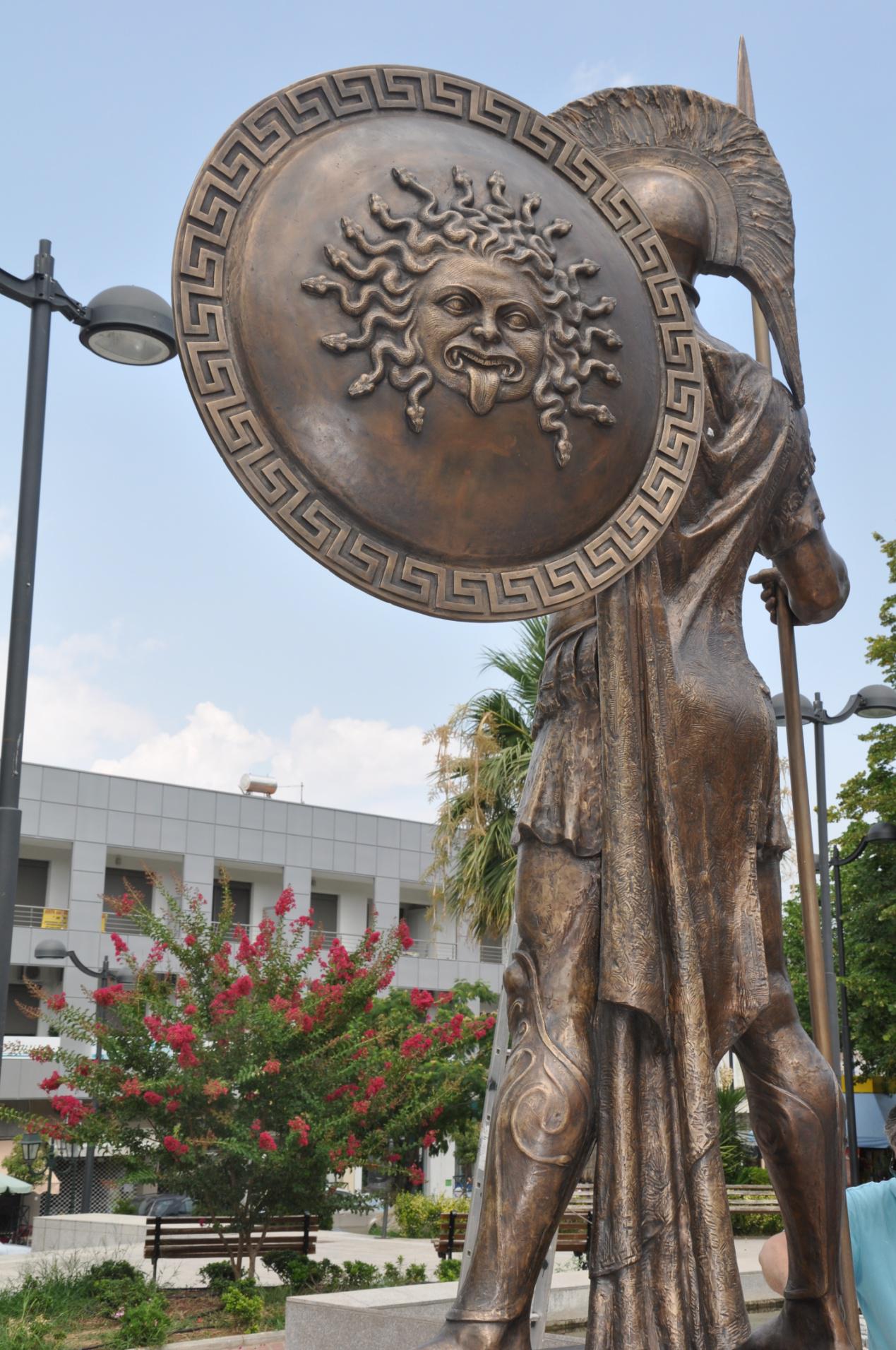Visits
Every year, educational programs for all classes/grades of Primary School take place in the School Museum and its courtyard. After consultation with the teachers, the School Museum opens its doors to teachers and students, welcomes them to its premises and offers them the chance to be familiar with a school different from the one today.
“Let’s go back in time and revive the old school, where grandparents used to go when they were children”.
In the museum’s programs, children are transported in an experiential way to the old school and the old wooden desks through stories, screenings, excerpts, and play. Play is an integral part of children’s lives, which means that it is always relevant and interesting. Students, through playing games, participating in playful activities and observing the museum’s exhibits, have the opportunity to get in touch with the school attended by their grandparents, to get to know a part of past students’ life. Finally, students can also compare their own school life and experience with that of the past students.
At the same time, teachers interactively participate in the program, the playful activities, the articrafts, games and recall memories of the past.
More specifically, students will get to know:
-the building infrastructure of the post – war era
-the difficulties of children to be educated (due to misery, lack of parents’ education, lack of free education, etc.)
-the authoritarian pedagogical system and the authority of the teacher that is reflected semantically and multimodally through the exhibits
- -the usefulness of specific exhibits (wood stove, supervisory material, posted quotes, sandbox, etc.)
-the difficulties of the teacher’s work, his multiple roles in the classroom, as well as the control of his teaching duties by the school’s principal, whose grade played a catalytic role in the teachers’ professional course.
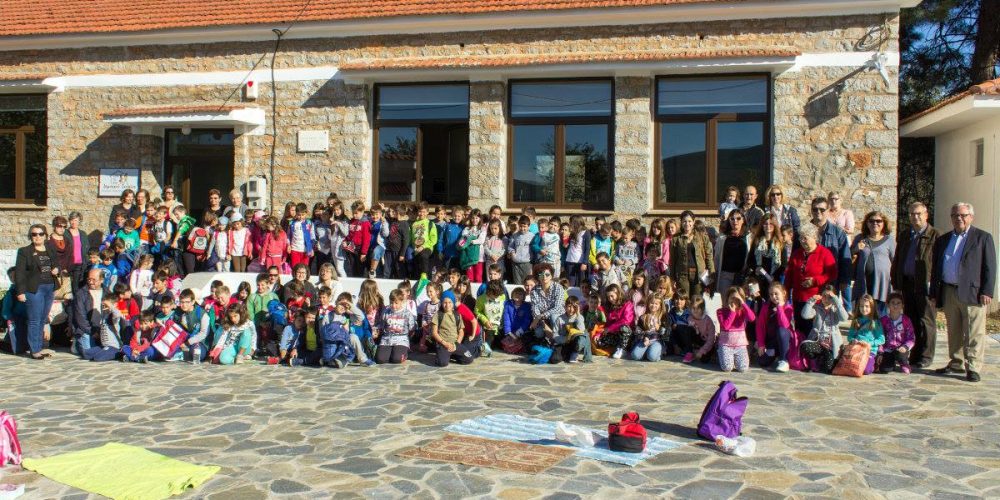
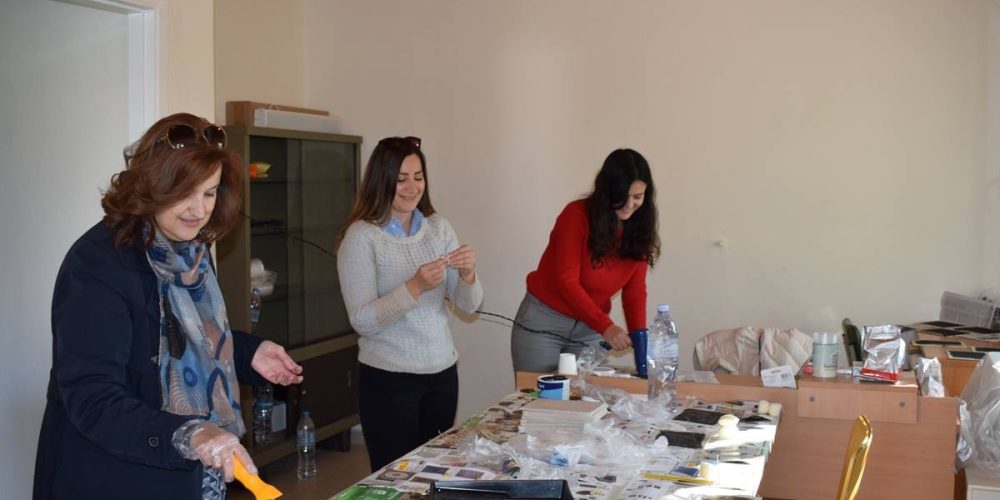
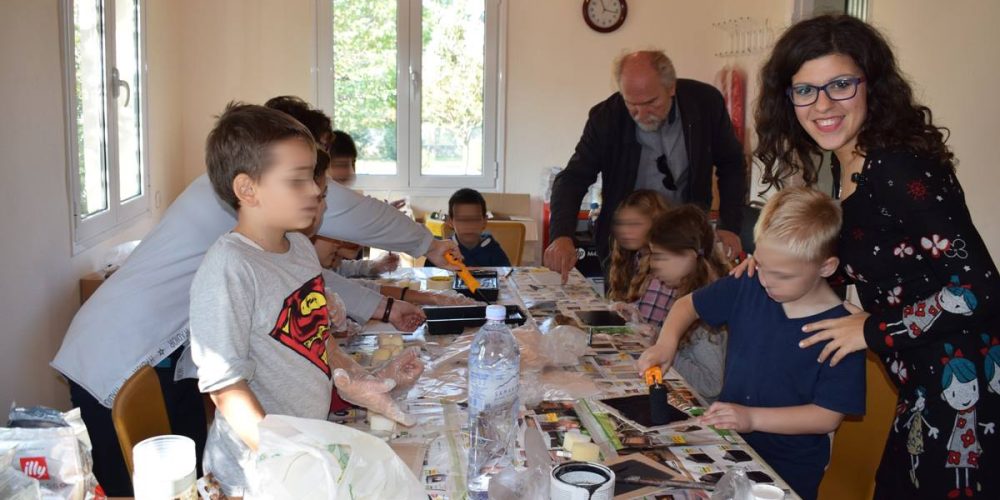
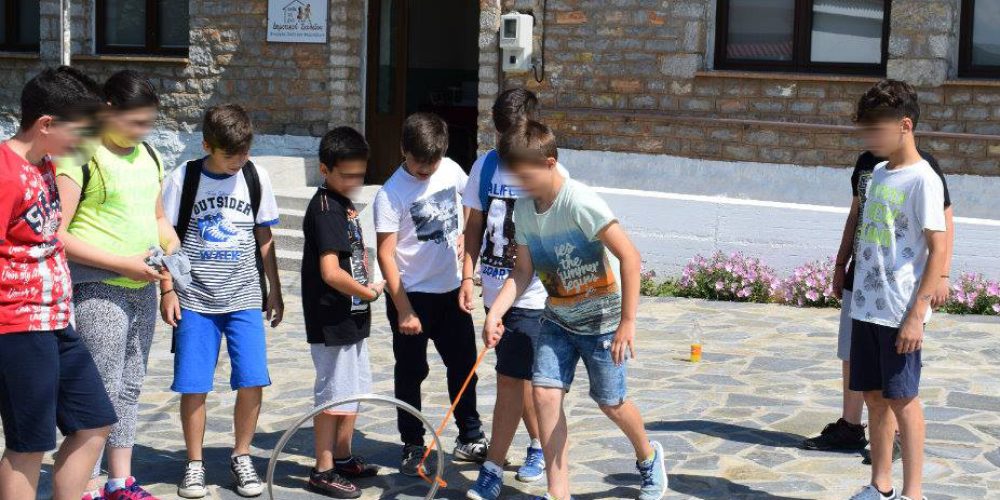
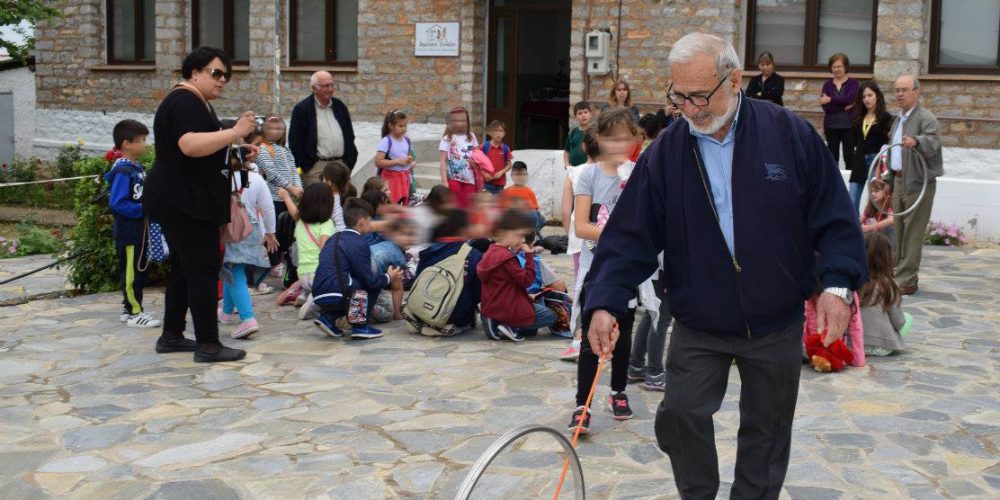
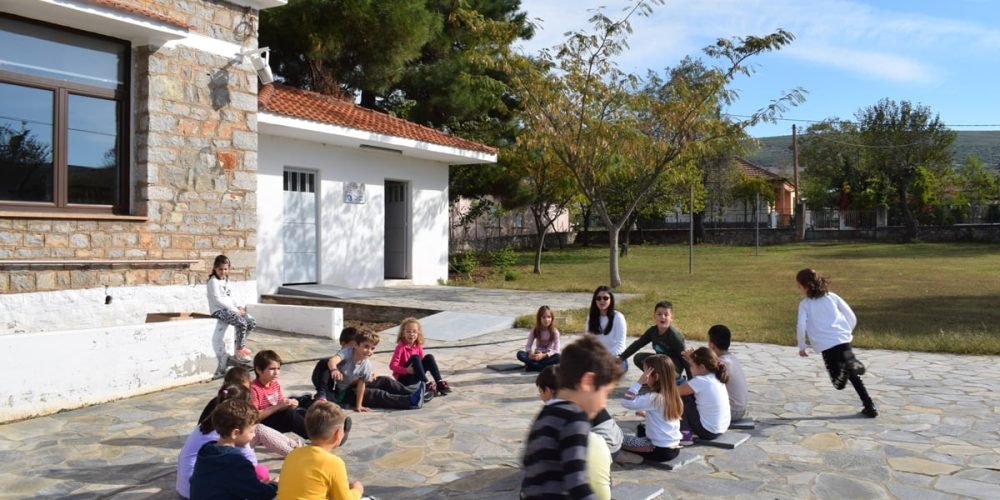
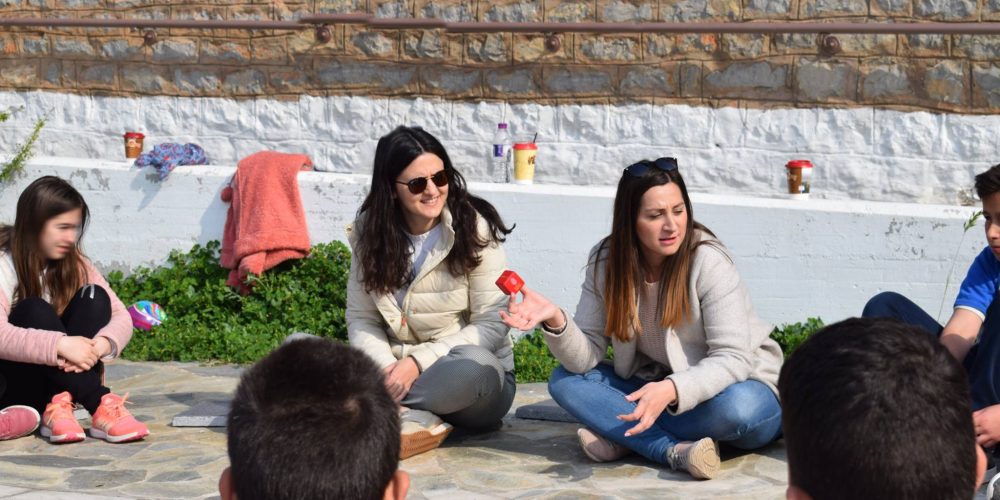
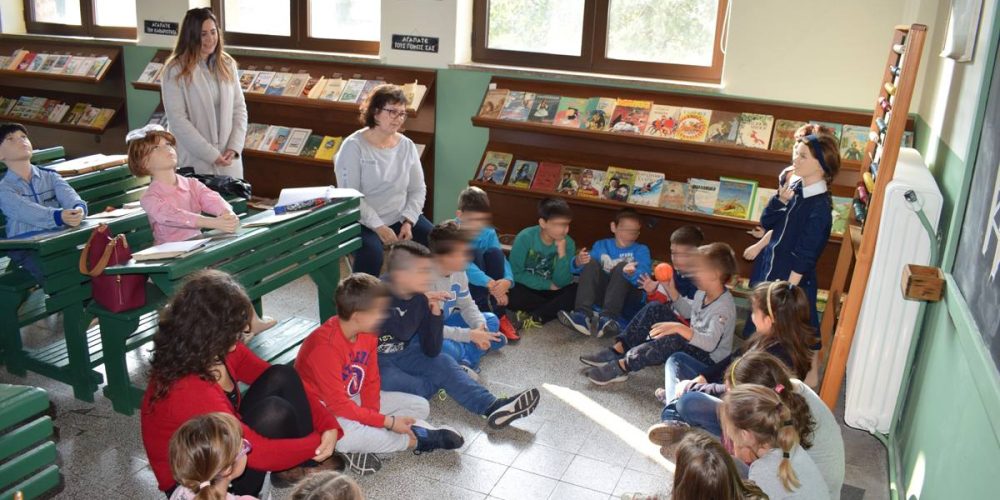
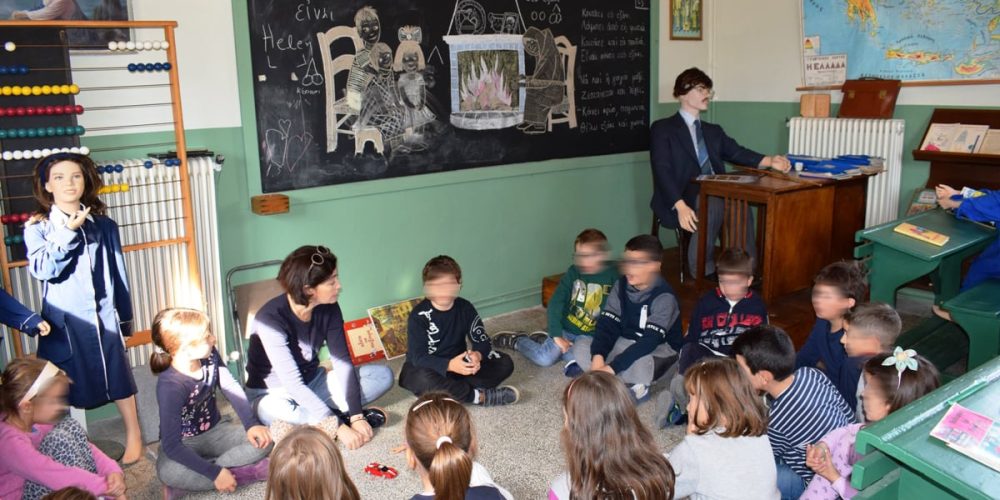
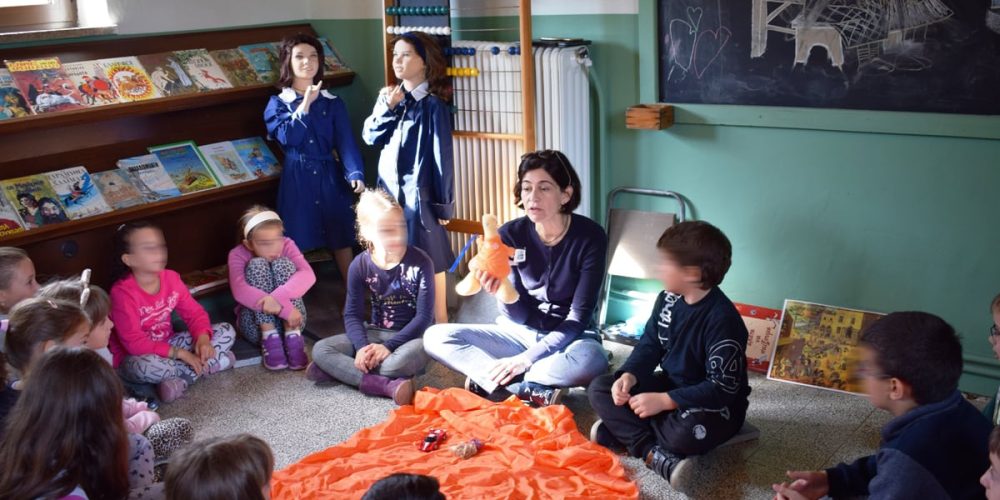
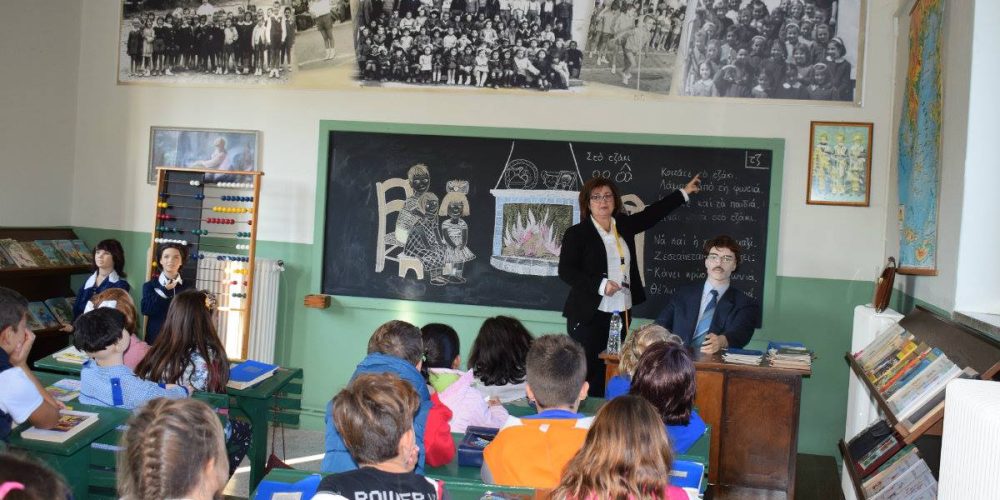
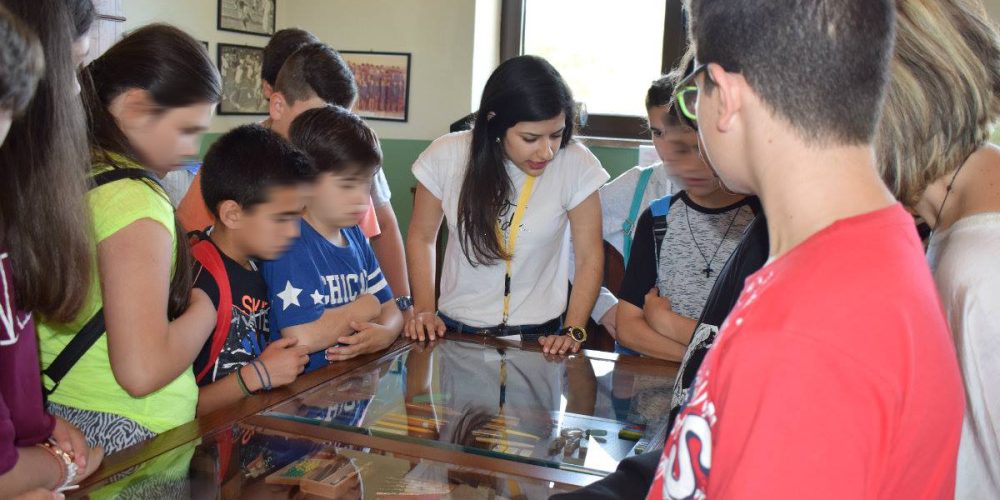
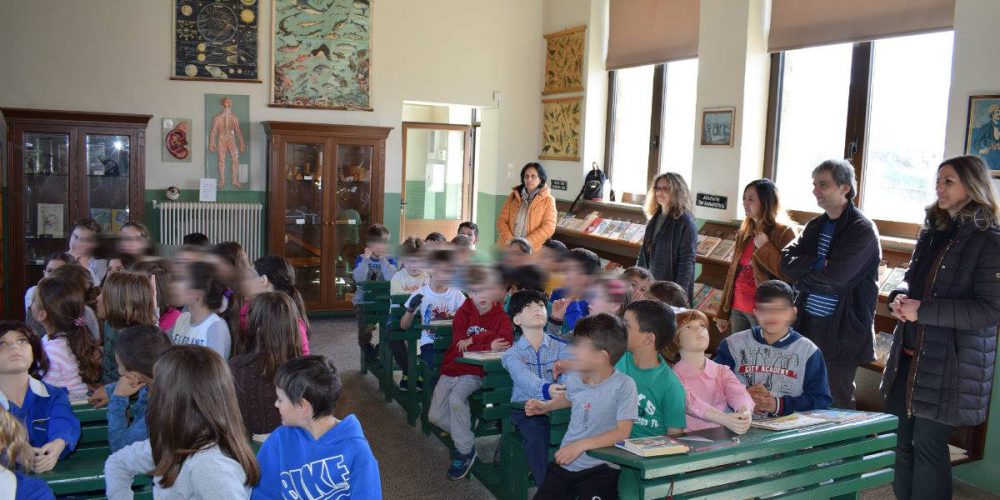
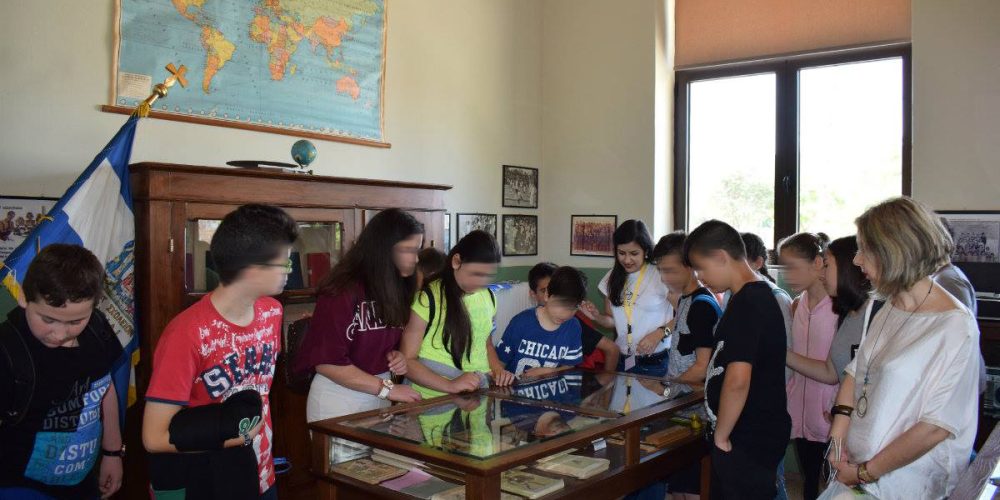
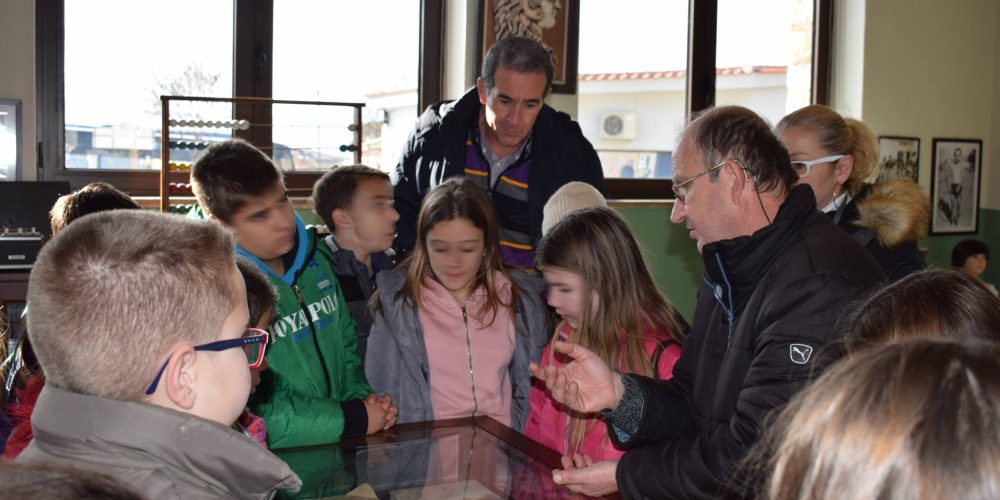
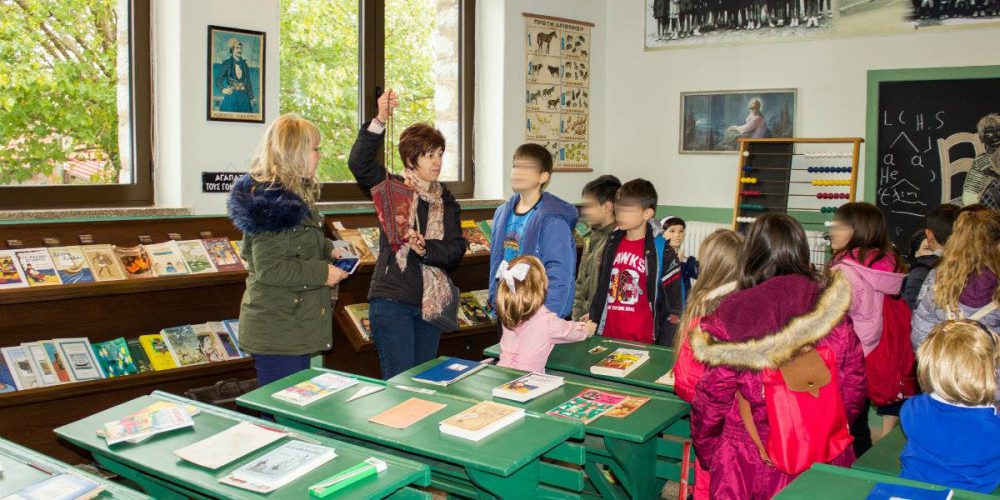
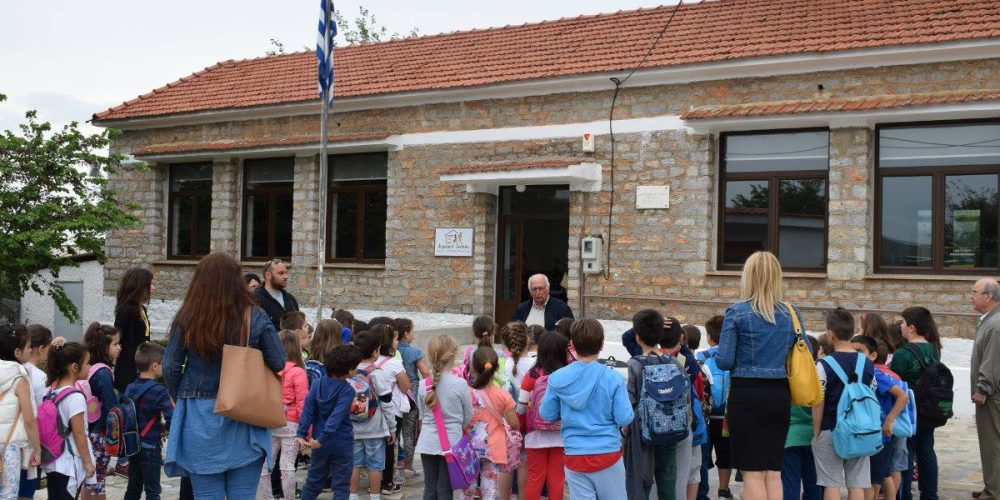
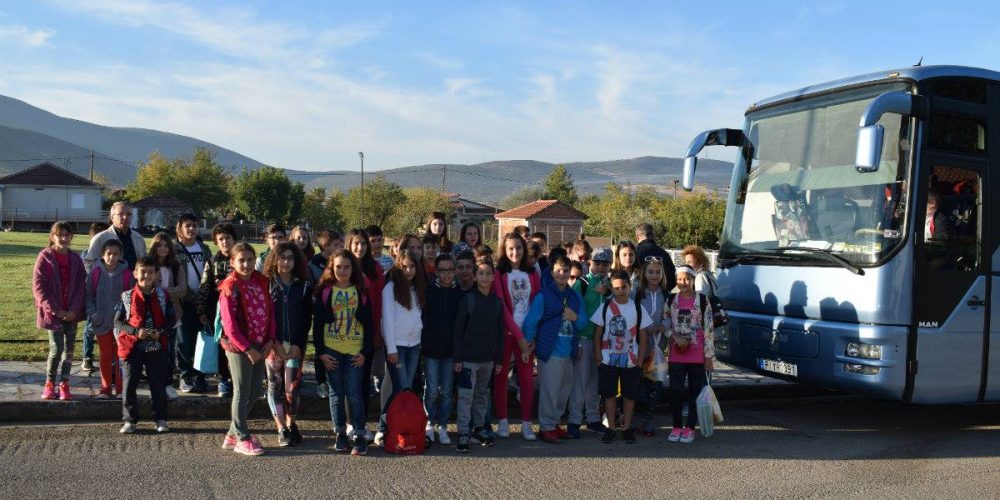
Below, we list indicative programs that have been implemented in the School Museum the previous school years. The topics we deal with can be combined with several courses from the Curriculum, such as modern Greek language, mathematics, environmental studies or can be considered as separate modules.
Objectives of the program:
Get students in touch with the old games that have been played at school all over the world.
To develop their critical ability and observation.
To get in touch with the art of painting.
To develop team spirit and rivalry.
To develop their imagination and creativity.
Key points of the program:
Guided tour of the museum and exhibits.
Observation of Pieter Bruegel’s painting “Children’s games”, recording of games, discussion.
View and edit photos related to games played over the years, in different societies.
Traditional group and individual games in the School Museum’s yard, such as “mila”, “tiflomiga”, “mantilaki”, “abarisa”, “gkila”, wooden whirlpool, marbles etc.
Objectives of the program:
To acquaint the students with the old school and the objects of the past students’ daily life.
To make comparisons with the modern school.
To get students in touch with old games.
To develop team spirit and rivalry.
Key points of the program:
Guided tour of the museum and the exhibits.
Watching videos of the old school.
Experiential acquaintance with the school’s old objects.
Comparison of the old school with the modern one.
Traditional group and individual games in the School Museum’s yard, such as “mila”, “tiflomiga”, “mantilaki”, “abarisa”, “gkila”, wooden whirlpool, marbles etc.
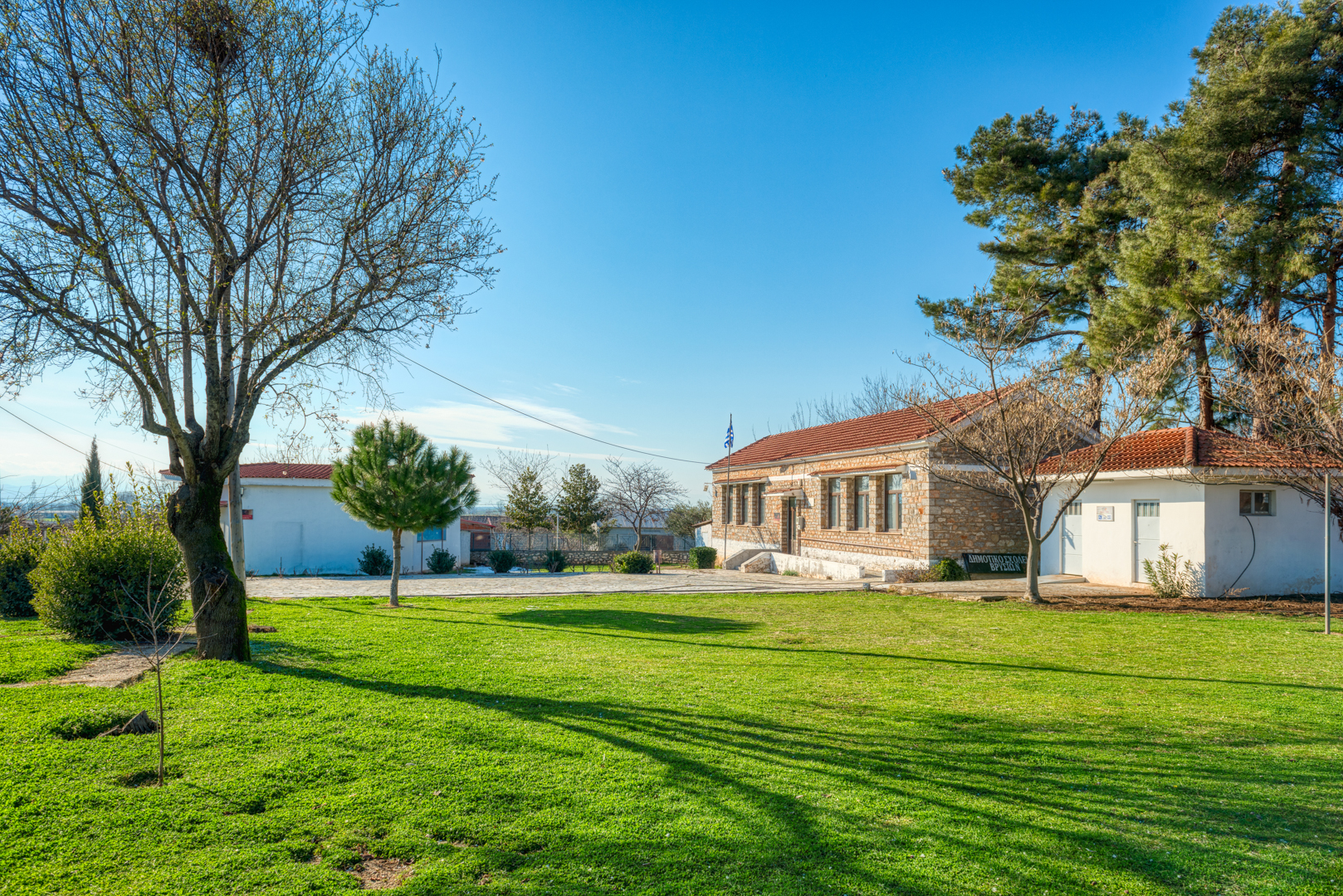
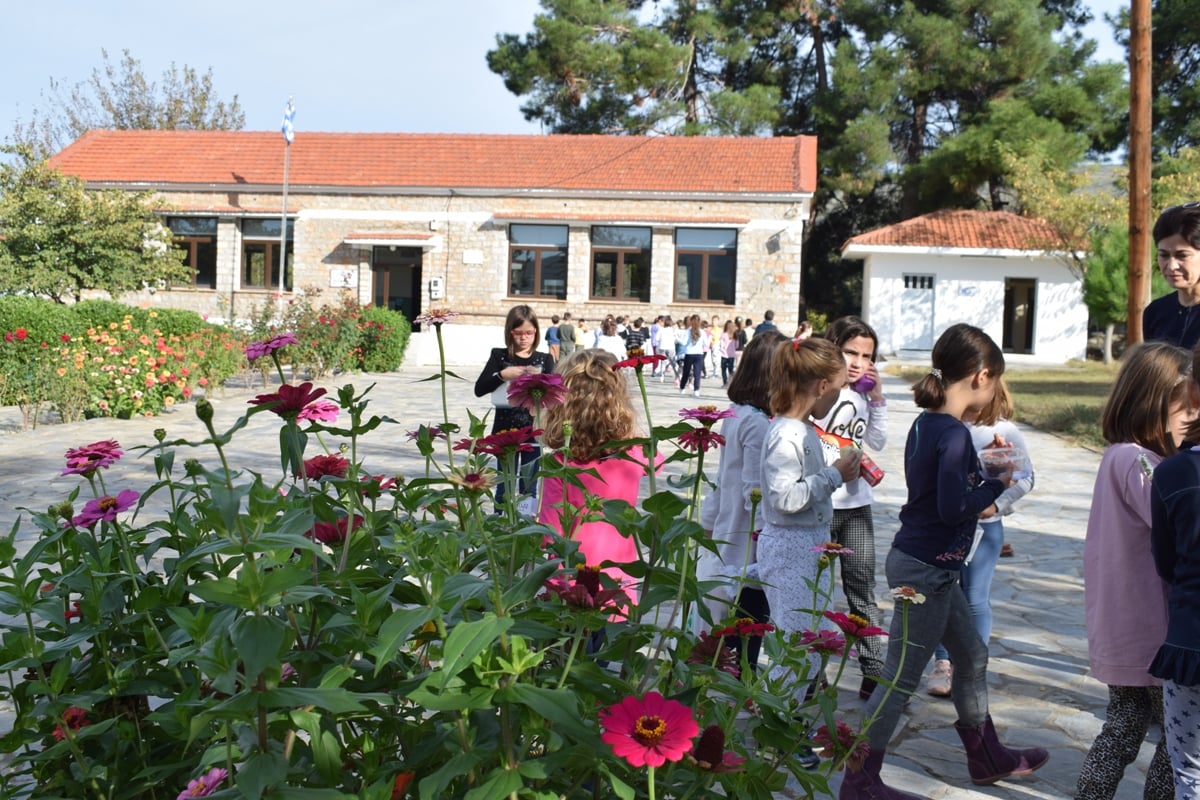
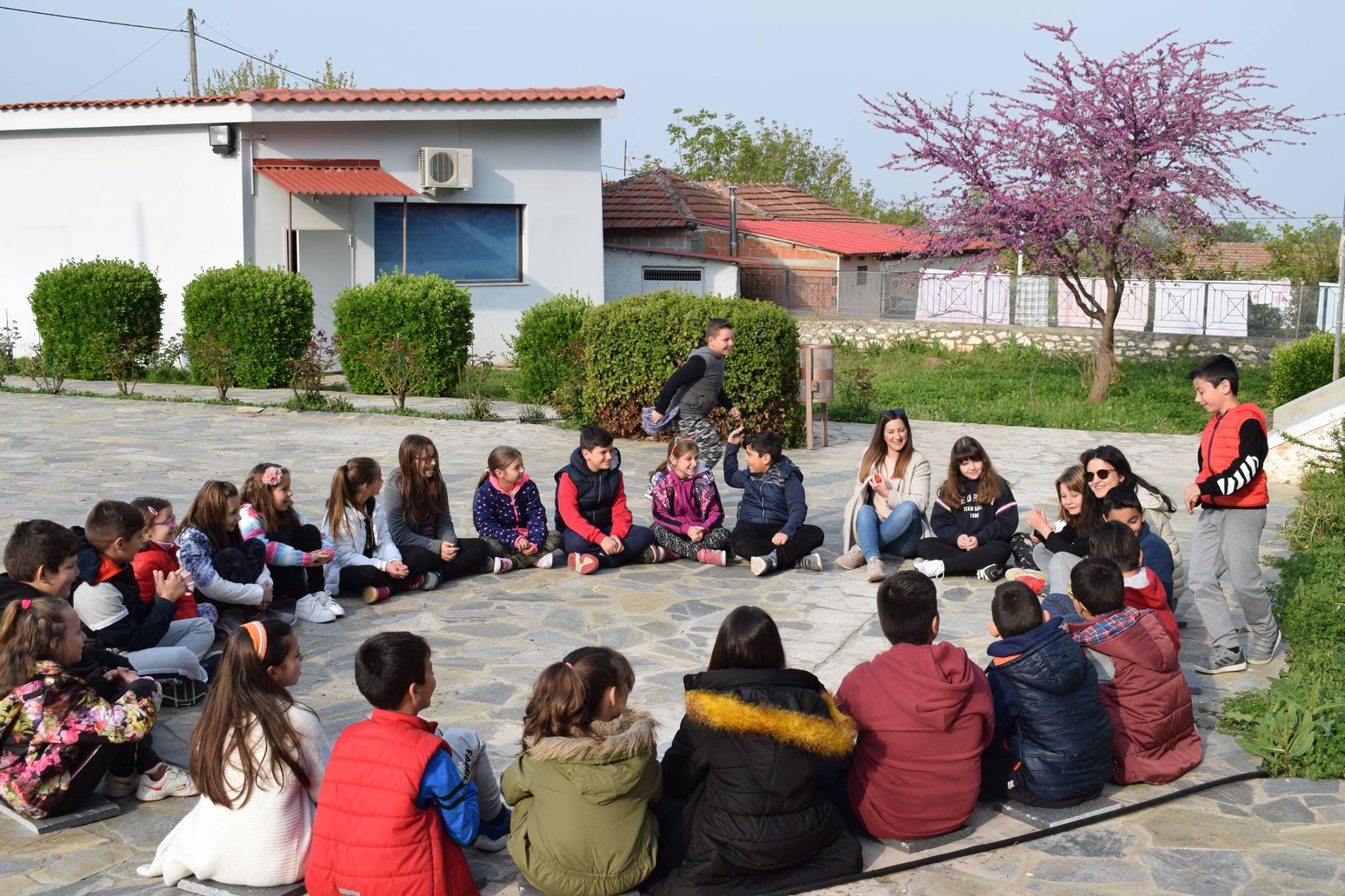
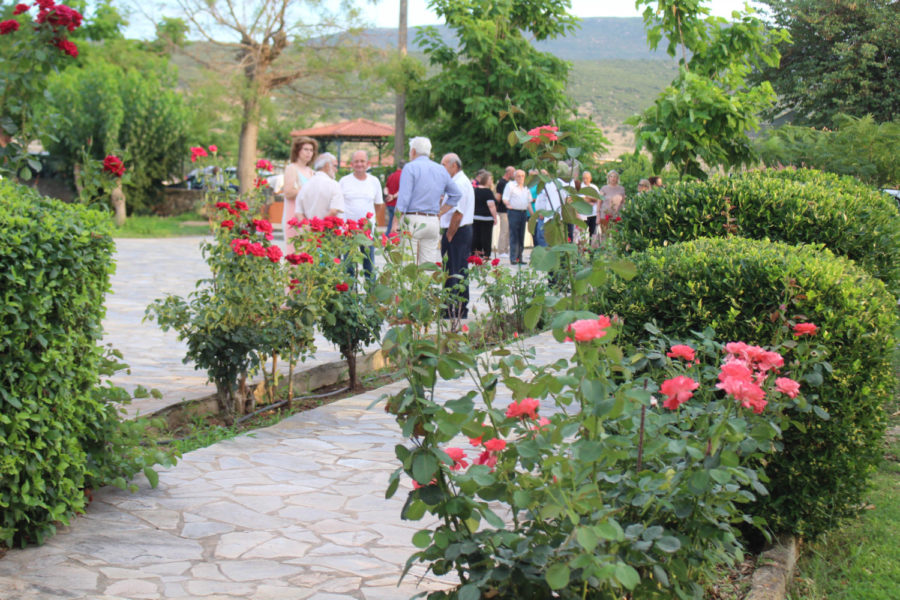
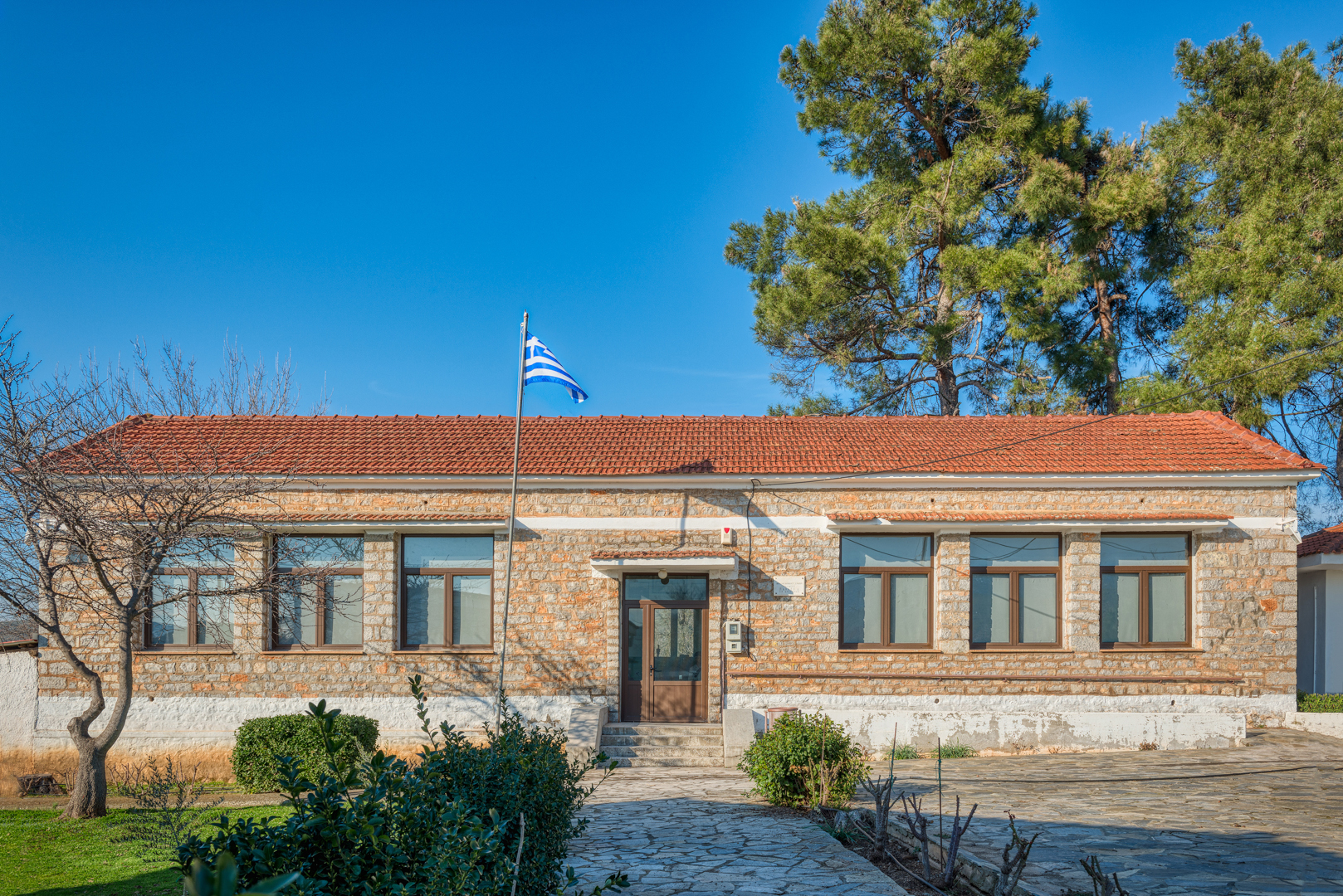
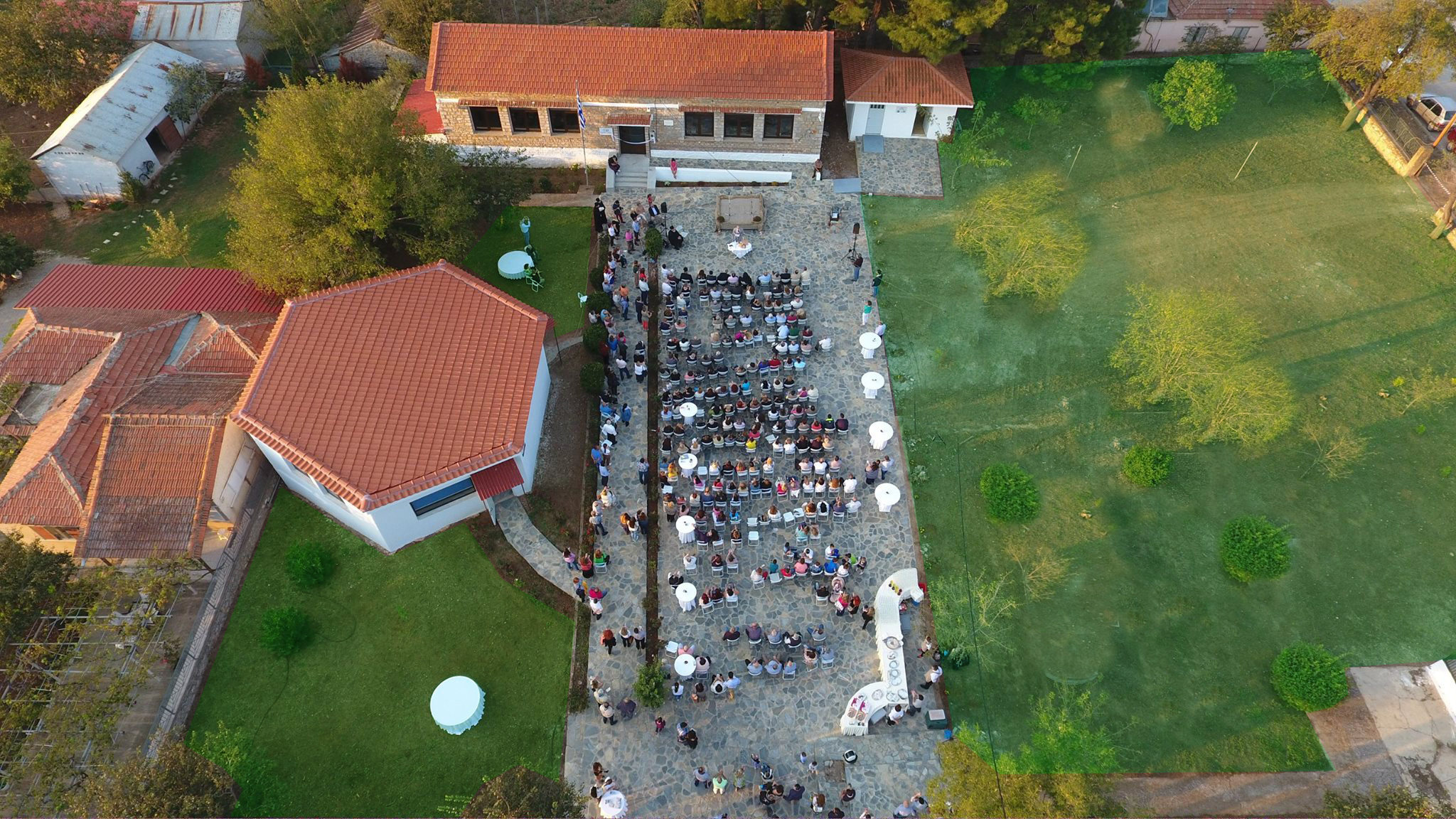
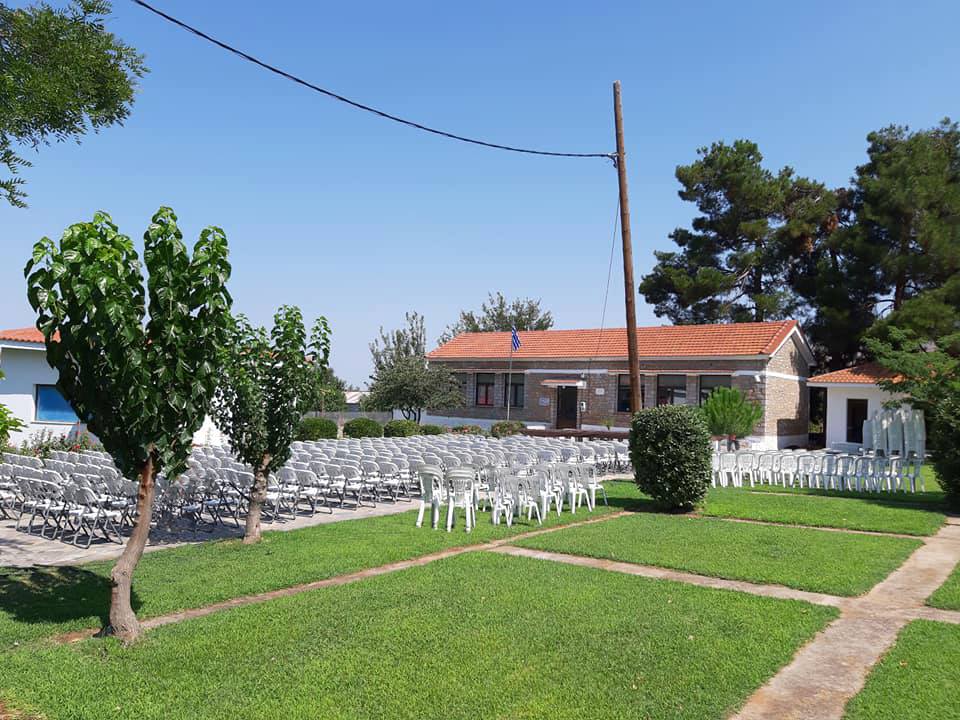
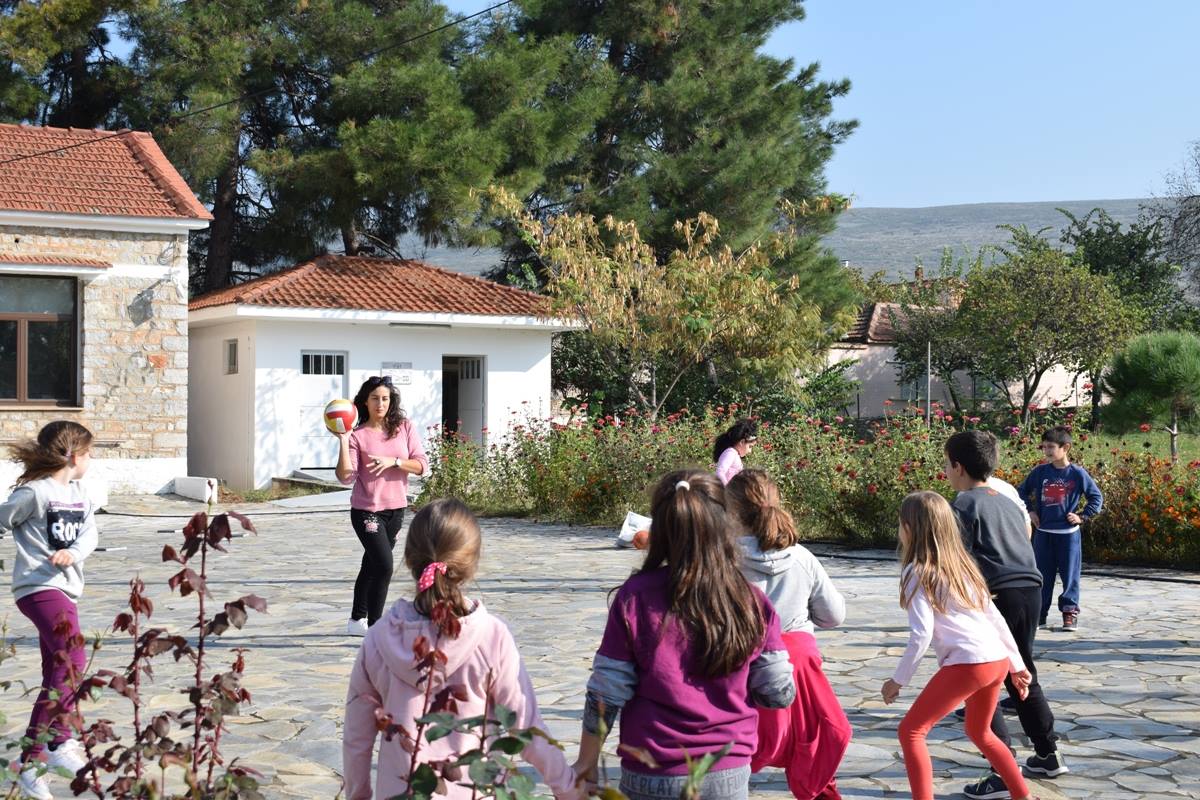
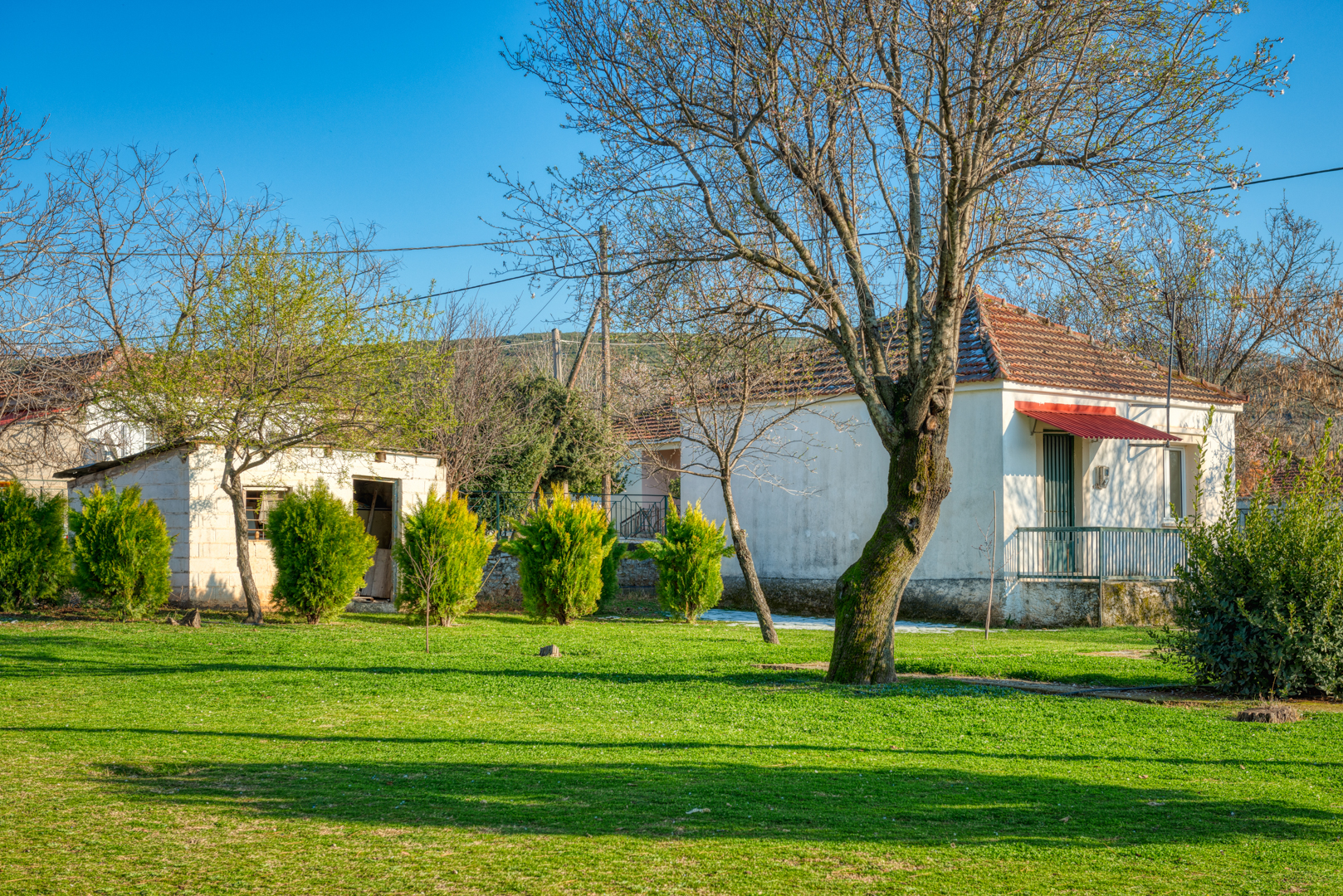
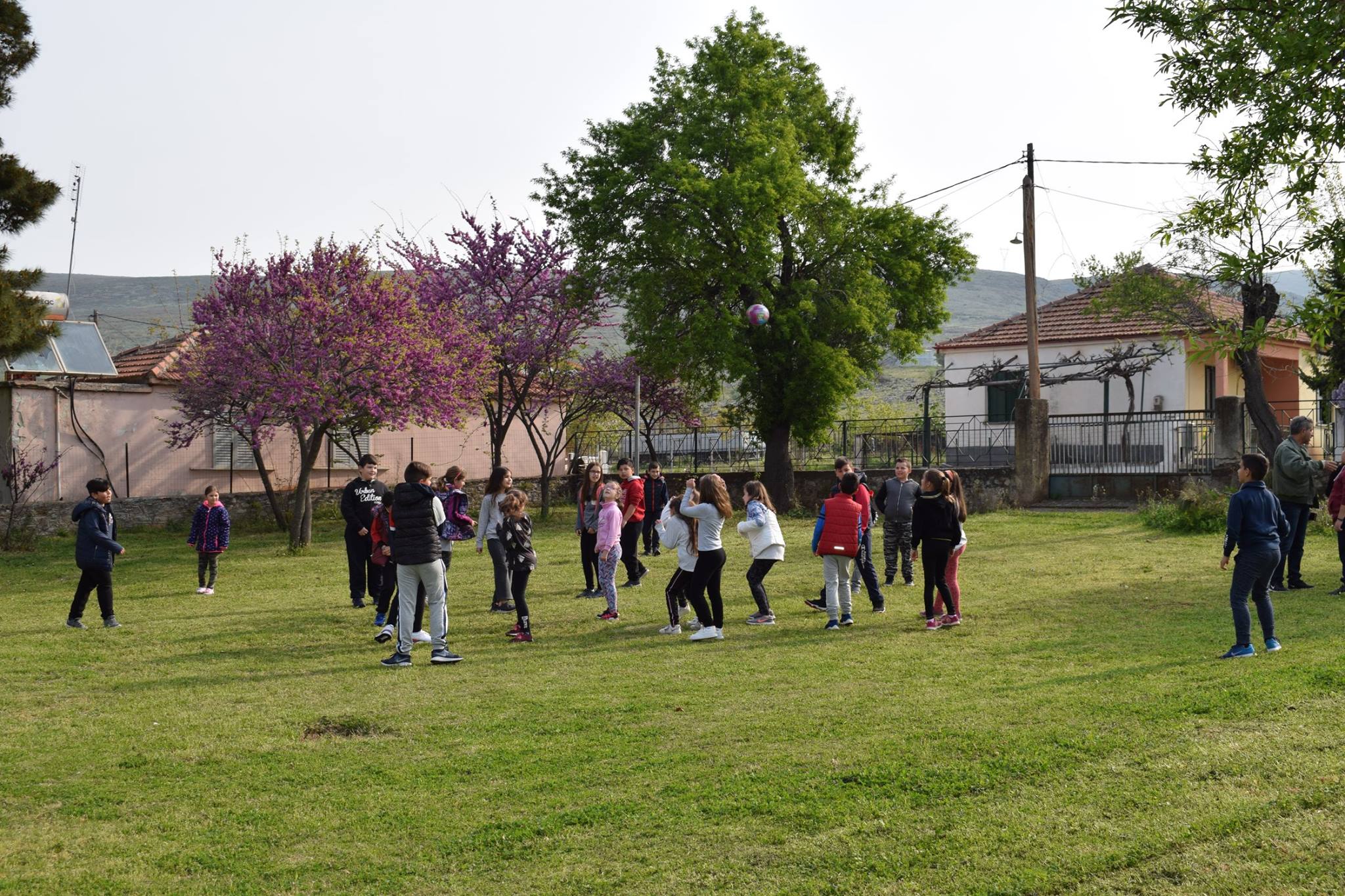
SCHOOL MUSEUM YARD
The beautiful stone building of the School Museum blends harmoniously with the green courtyard and the flower garden that surrounds it. It is truly an oasis of calm and beauty. Here, everything is in place, clean, comfortable, and tidy. Our volunteers take care of that. Aesthetically harmonized, functionally and pedagogically, it is an attractive means of education, teaching, and learning. It is a place where students can observe, participate, and learn from a complex and rich environment, to gain experiences from the natural environment, to love it and to care for its protection. At the same time, students can also gain valuable stimuli for the aesthetic and physical improvement of their school’s and town’s environment.
The yard of the museum is also ideal and is offered for events of other cultural institutions.
SCHOOL MUSEUM PARK
A great advantage for the School Museum is that there is, just across it, a beautiful, green park equipped with a playground. There, children are able to play in a completely safe area, to rejoice and enjoy the beauties of nature, returning to their school fascinated and loaded with experience, which will enthusiastically share with parents, siblings, and classmates.
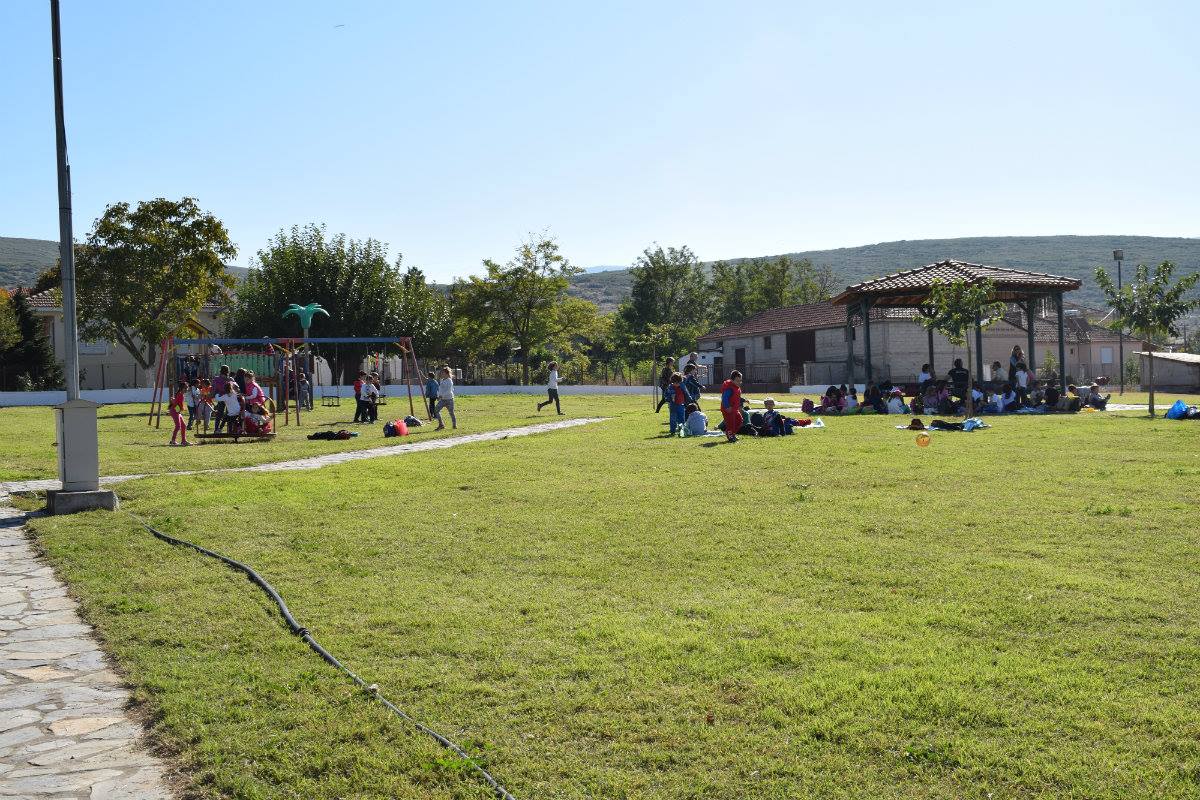
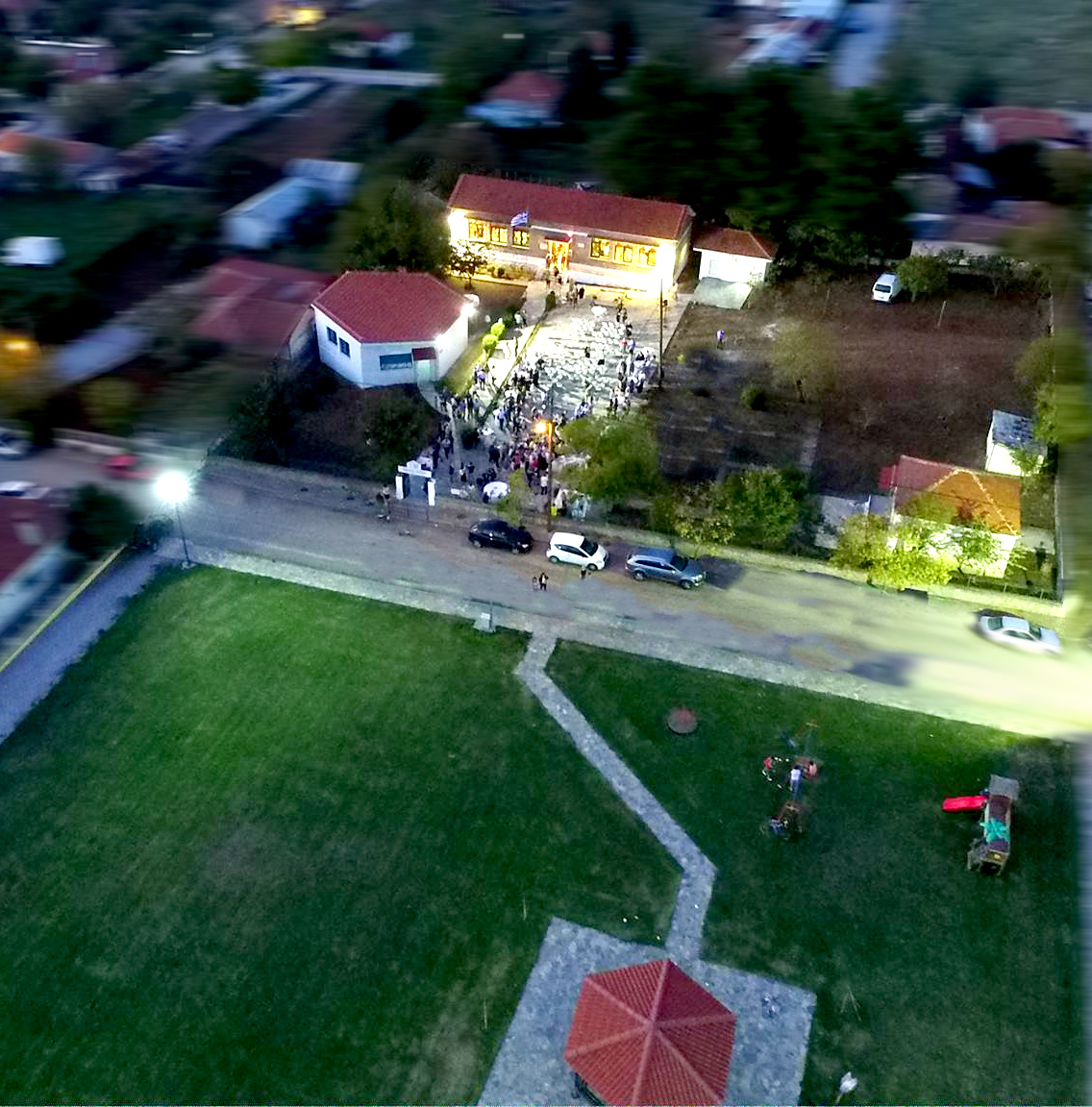
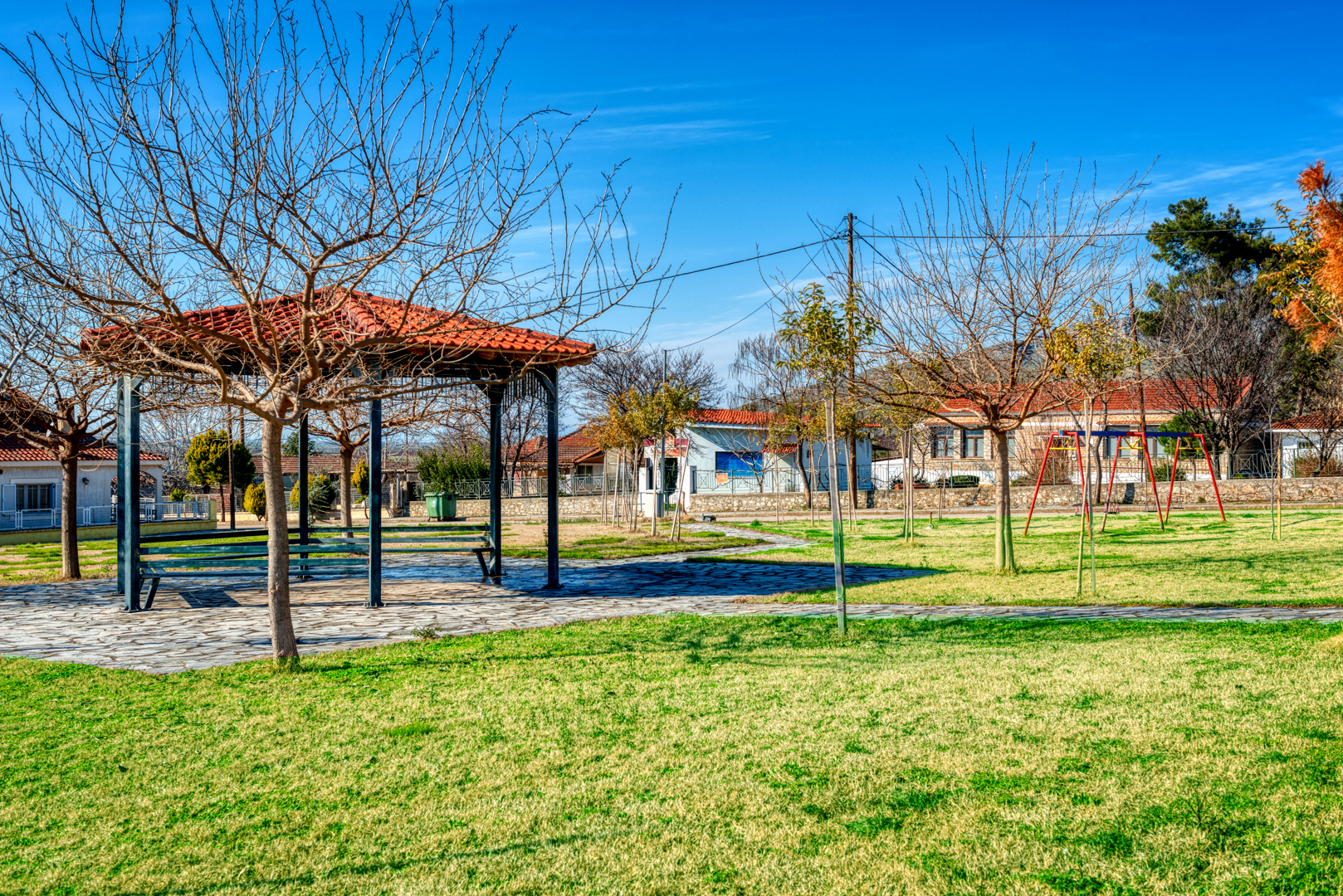
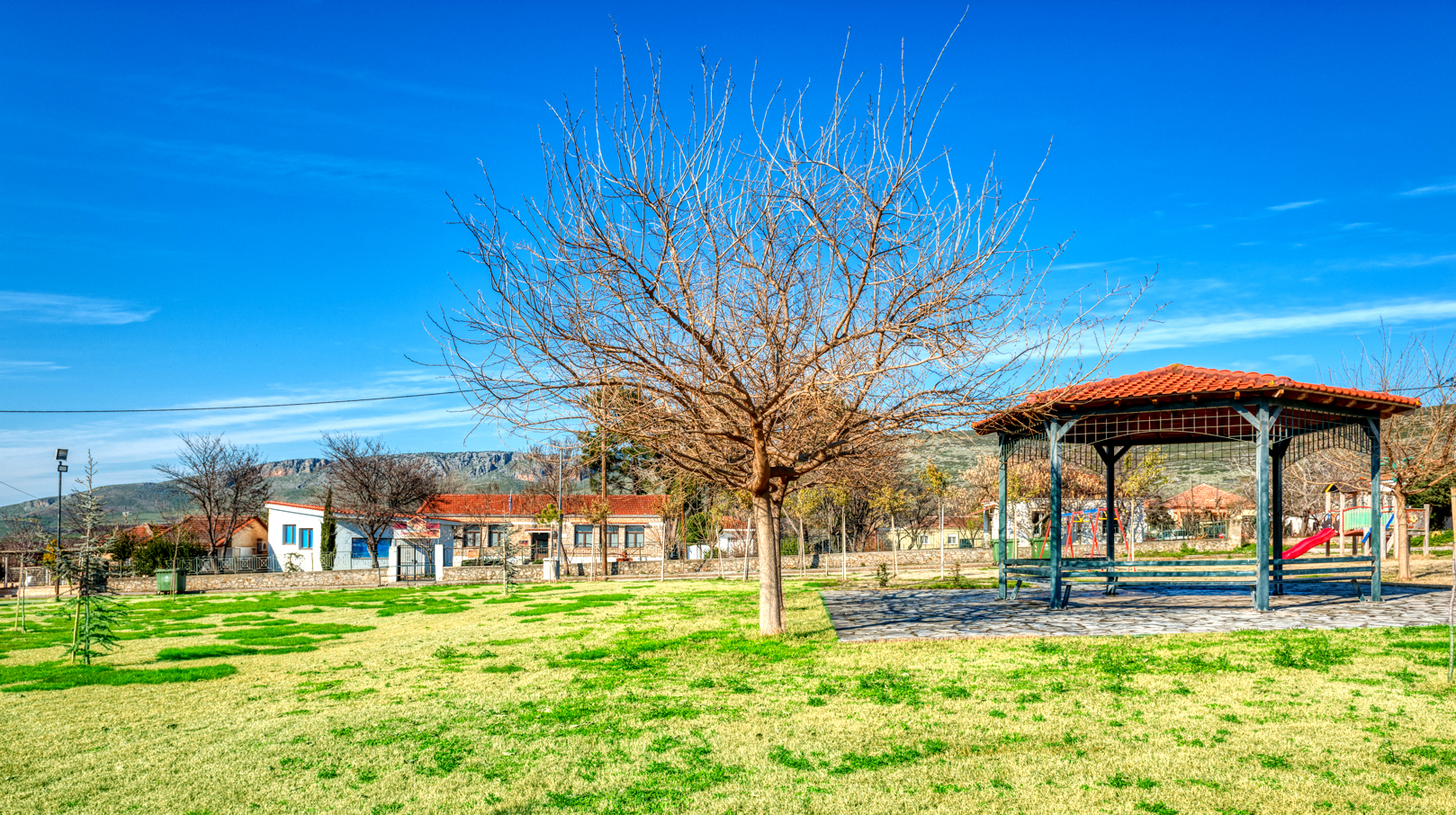
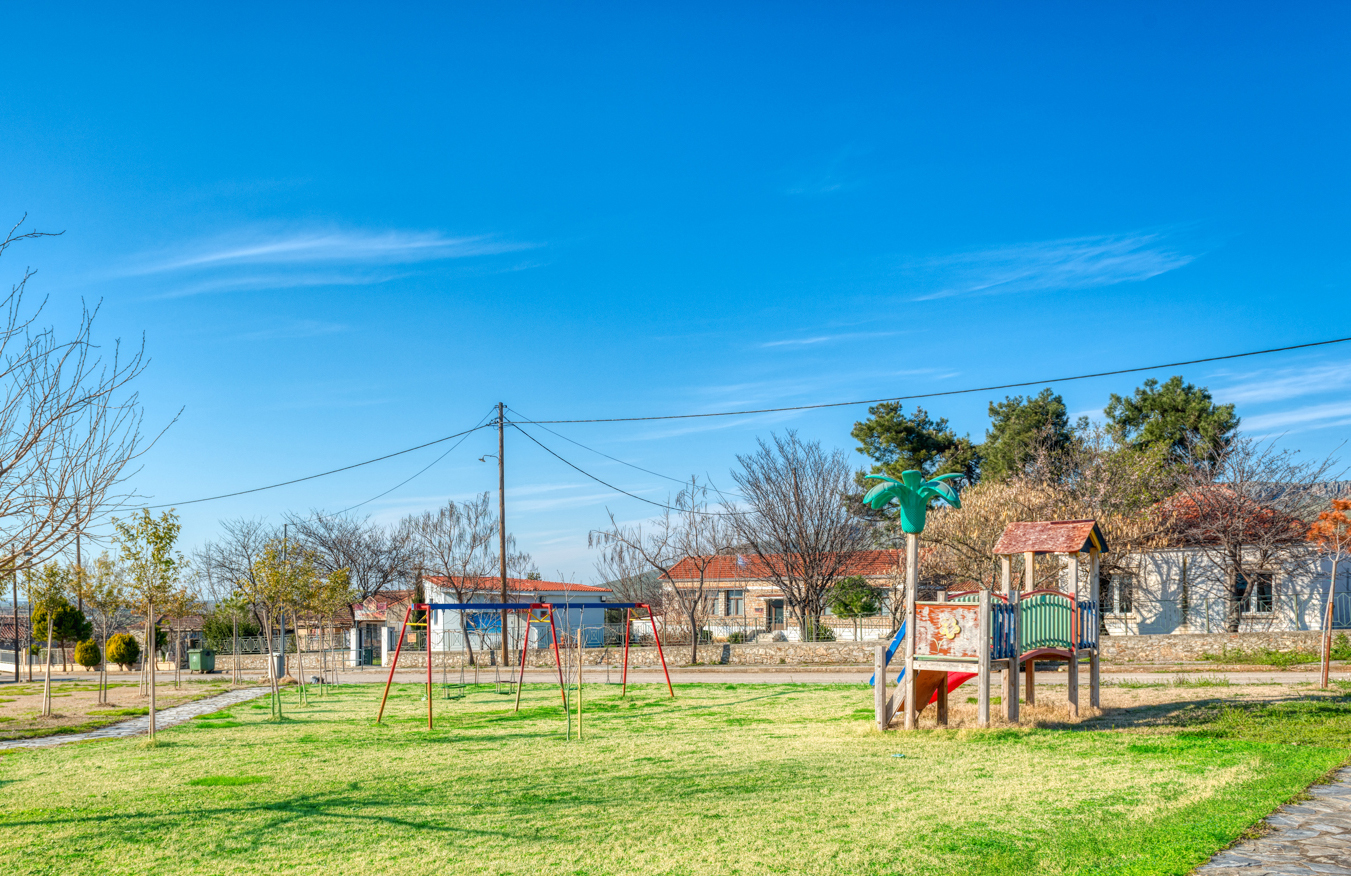
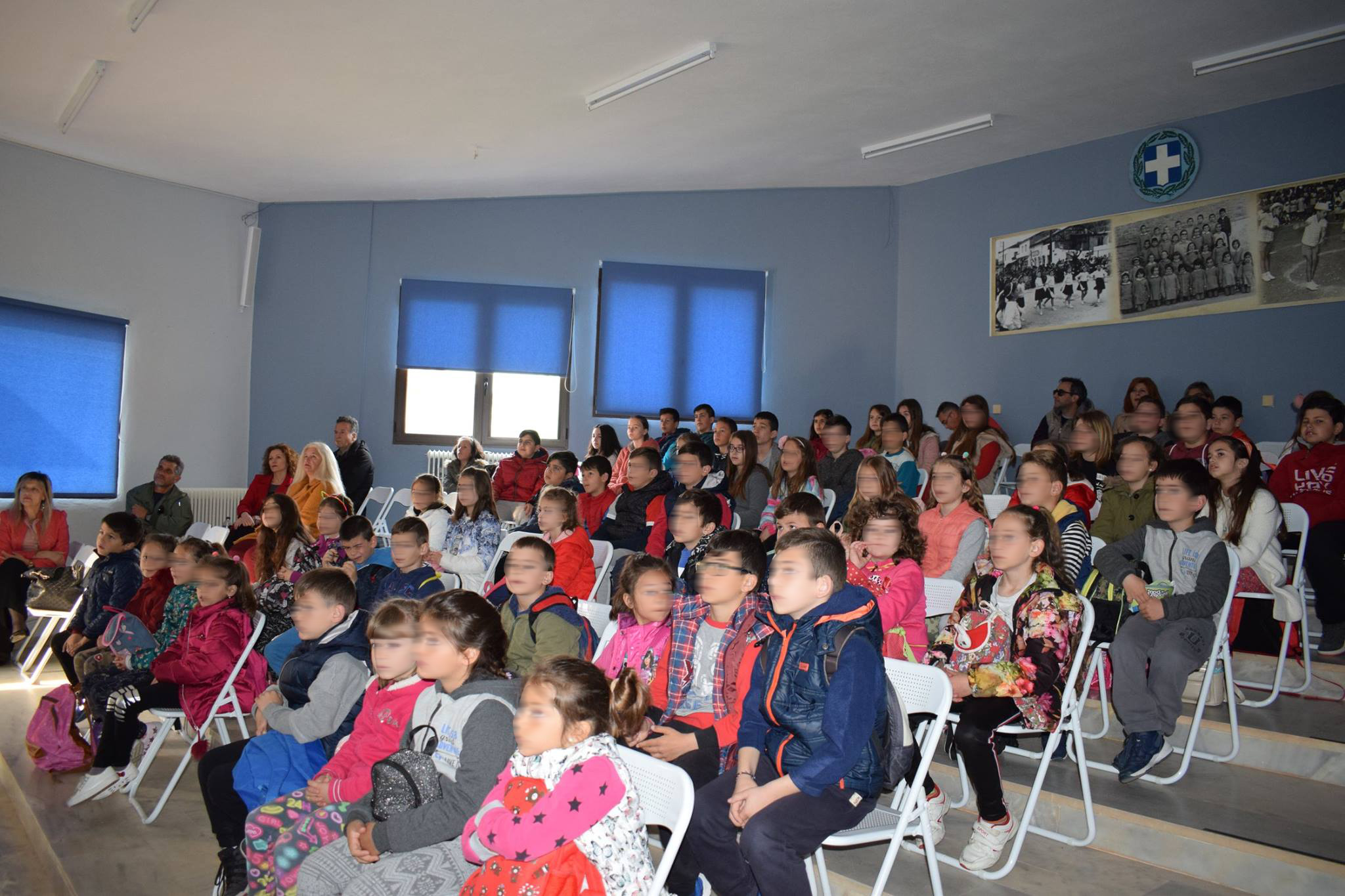
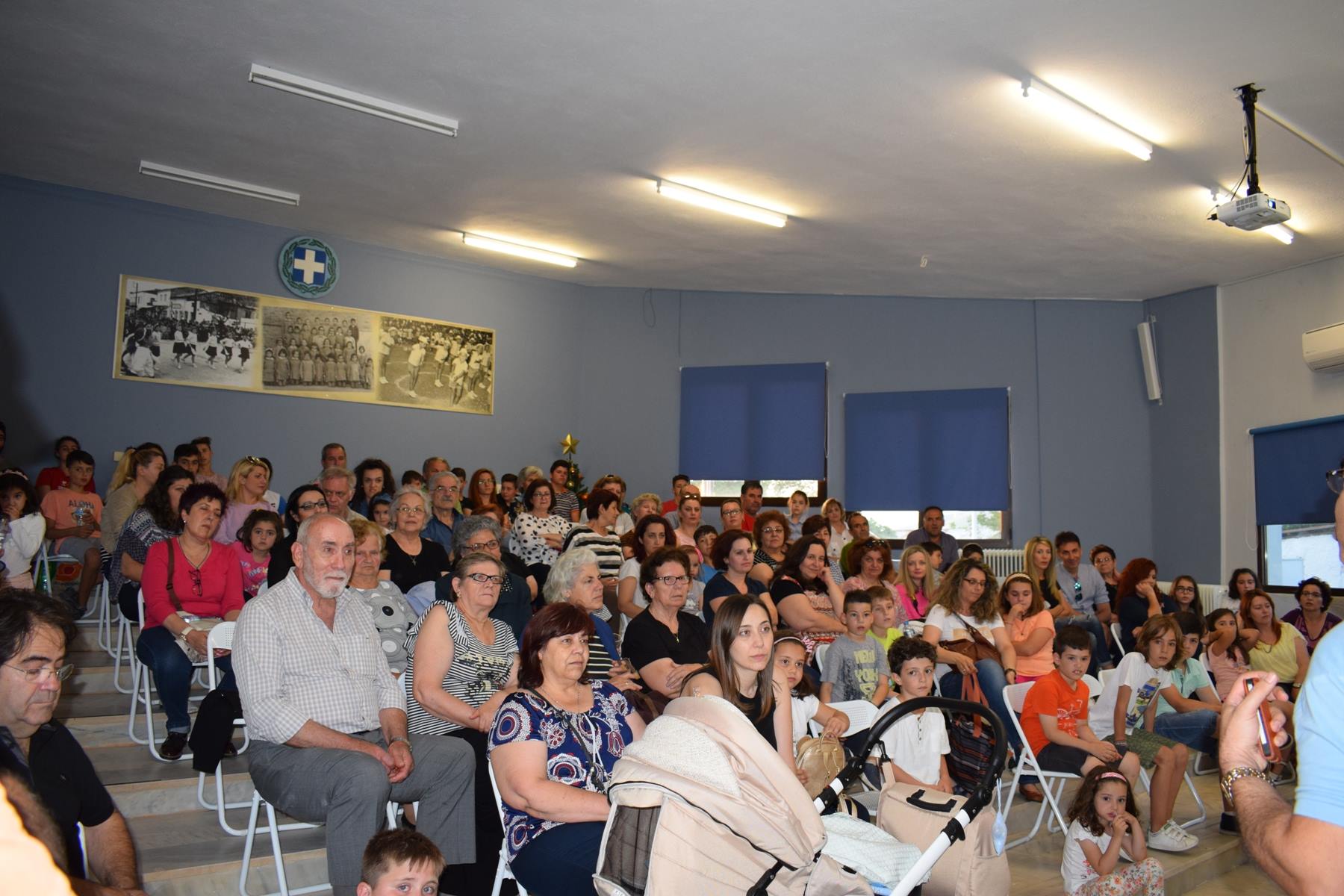
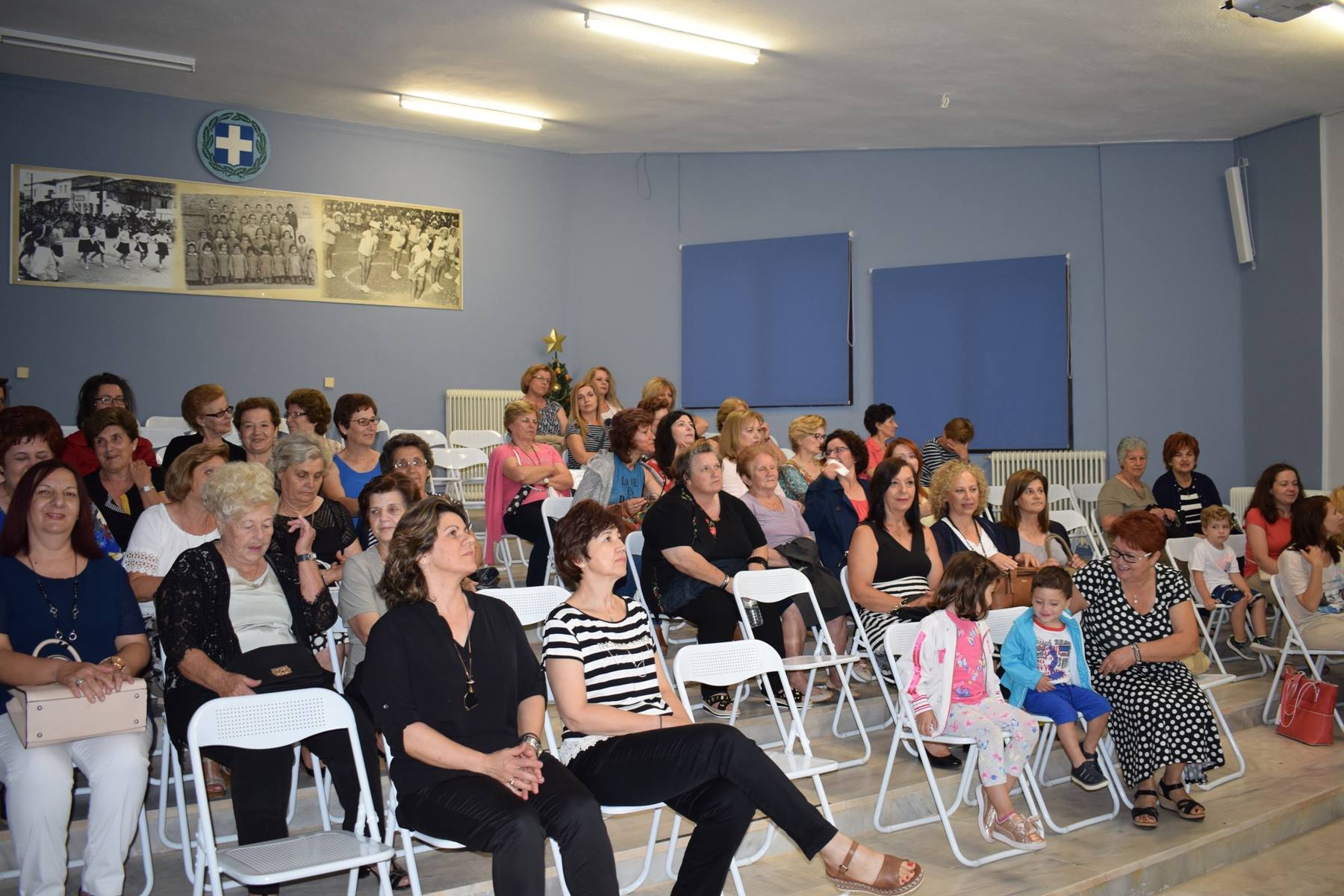
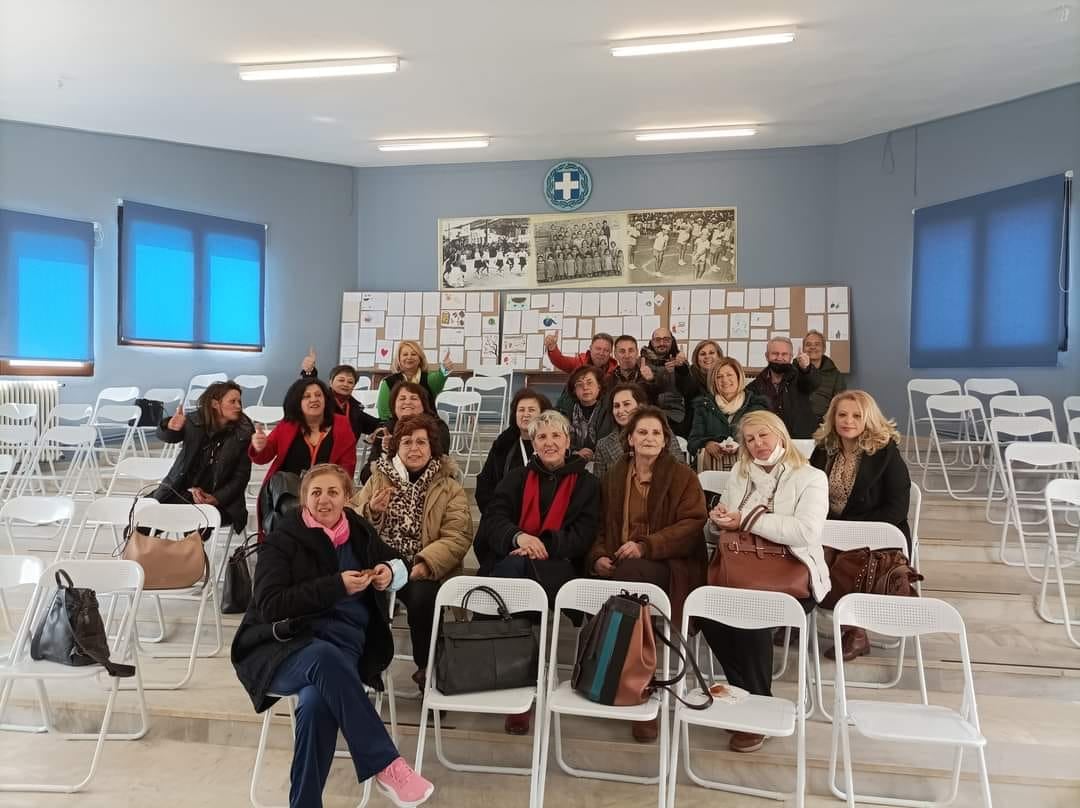
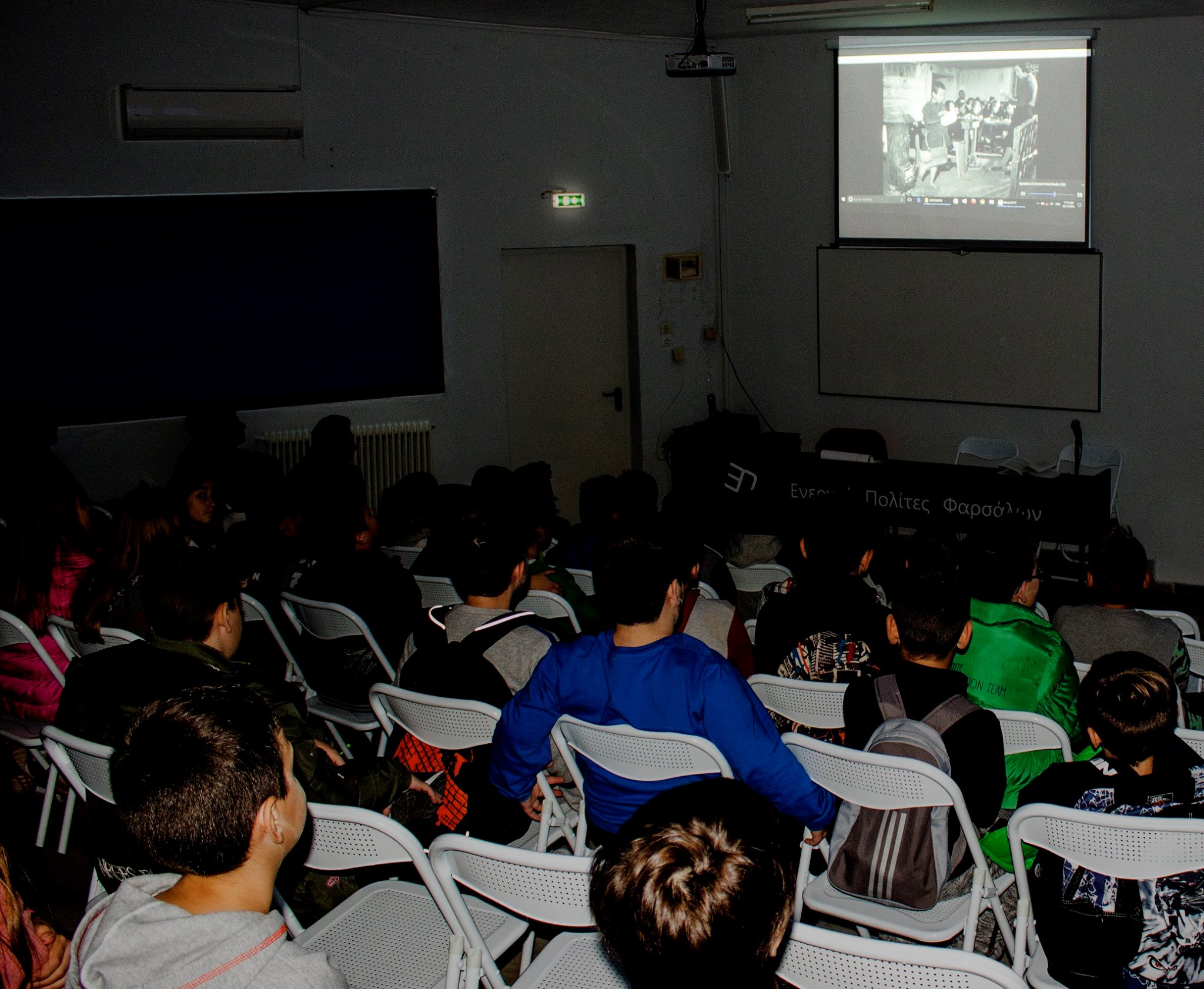
AMPHITHEATER
In the courtyard of the School Museum, next to the exhibit halls, there is a modern amphitheater, fully equipped electronically, air conditioned, comfortable, clean, tidy, where educational content is shown to our visitors. It is suitable for organizing workshops, lectures, screenings, events, presentations, meetings. Our Club, having as a dogma that everything that belongs to it, it is at the same time a social good to which everyone has the right to access, offers the free use of the amphitheater from institutions (clubs, cooperatives, Municipalities, businesses, and individuals) of every region. Anyone interested has the opportunity, by contacting one of the managers of our Association, to organize the event that suits him, and even more, to combine it with a guided tour of the School Museum’s exhibits without charge.
OTHER SIGHTS OF OUR REGION
The visitor of the School Museum can combine his visit in the area of Farsala with other great sights, depending on the season. Both the monuments of archaeological importance and the sights create the puzzle of the great history of the area.
ACROPOLIS (Ancient and Byzantine)
In 4,000 BC Farsala was inhabited and in 1393 – 1394 was conquered by the Ottomans. Visiting Farsala today, you can see what is left of the historical route (4,000 BC - 48 BC - 1893-94 AD - 10-13 AD) and it is enough. In the post – archaic period (late 6th century BC) the city of Ancient Farsala, which was rich and strong, began to be surrounded by a strong wall, fortified with towers and gates. The construction of the wall continued until the 4th century BC. During the Byzantine period, the city was re-walled in the years of Emperor Justinian (6th century). The ancient Acropolis continued to be used and its walls were rebuilt, incorporating in the new wall the preserved parts of the ancient. Parts of the Acropolis wall as well as fragments of the eastern part of the city are preserved to this day due to the fortification that took place in that period. Access to the Acropolis can be done by car or by hiking through the thicket.
ARCHAIC VAULTED TOMB
During the period 1951 to 1954, the vaulted tomb of Farsala, which was to become known to the scientific community by the name “Verdelis tomb”, was excavated by the then Curator of Antiquities N. Verdelis. This burial monument was first built in the post – archaic years (end of the 6th or early 5th century BC) and remained in use until the Hellenistic period. A stone road leads to the burial, circular chamber. The monument was covered by a pile of soil that formed a mound, the periphery of which was confined by a built enclosure. The enclosure is structured according to the polygonal masonry system and at its base it presses on straight, smooth plates. A same building system is found in the oldest surviving part of the fortified wall of Ancient Farsala, which is a safe terminus post quem for the dating of the monument no later than the early 5th century BC.
APIDANOS RIVER SPRINGS
Thetis lived with Peleus in his palace in Fthia (nowadays Farsala) and used, according to mythological and local traditions, to bathe in the waters of the most beautiful ancient river God, Enipeus, but also in the Apidanos river springs. Both rivers irrigate the land of Farsala and were an integral part of its primitive myths. Thetis, holding her son by the heel, plunged him into the deadly, magical waters of the river and managed to make him invulnerable and immortal, except for the point that she held him, which remained vulnerable and known, to this day, as “Achilles heel” (a term denoting one’s sensitive and vulnerable point). Seeing her, however, Peleus thought that she wanted to drown their child and so he expelled her, sending her back to the sea kingdom of her father, Nereus.
ACHILLES
The town of Farsala, the legendary Fthia of the Mycenaean times, was the birthplace of the most emblematic ancient Greek hero, the Homeric Achilles. Achilles was the son of the king of Fthia, Peleus, and the Nereid Goddess Thetis, grandson of Diogenes Aeacus. His origin was directly related to Zeus himself. He was mythologically, according to one version, the seventh child of his parents. Peleus entrusted the upbringing and education of his son to Centaur Chiron, who lived on Mount Pelion. There, Achilles was primarily taught medicine and music, but also the art of war, hunting and taming horses.
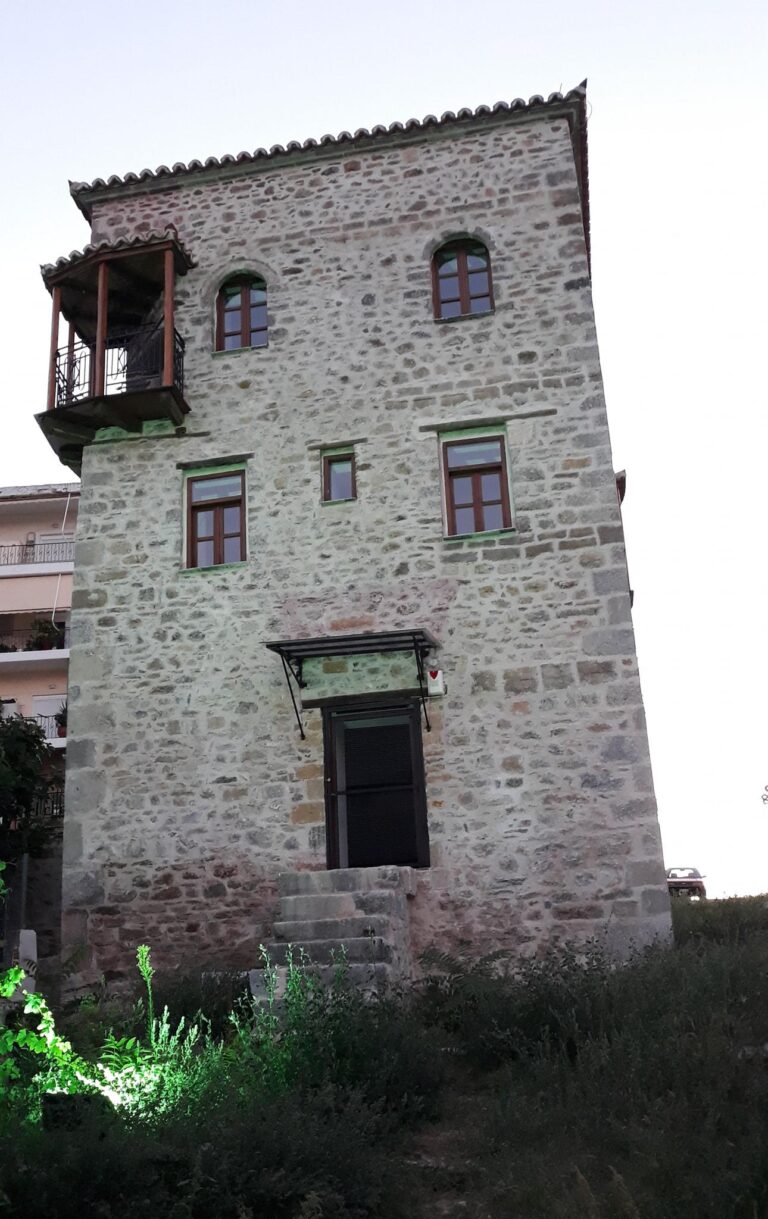
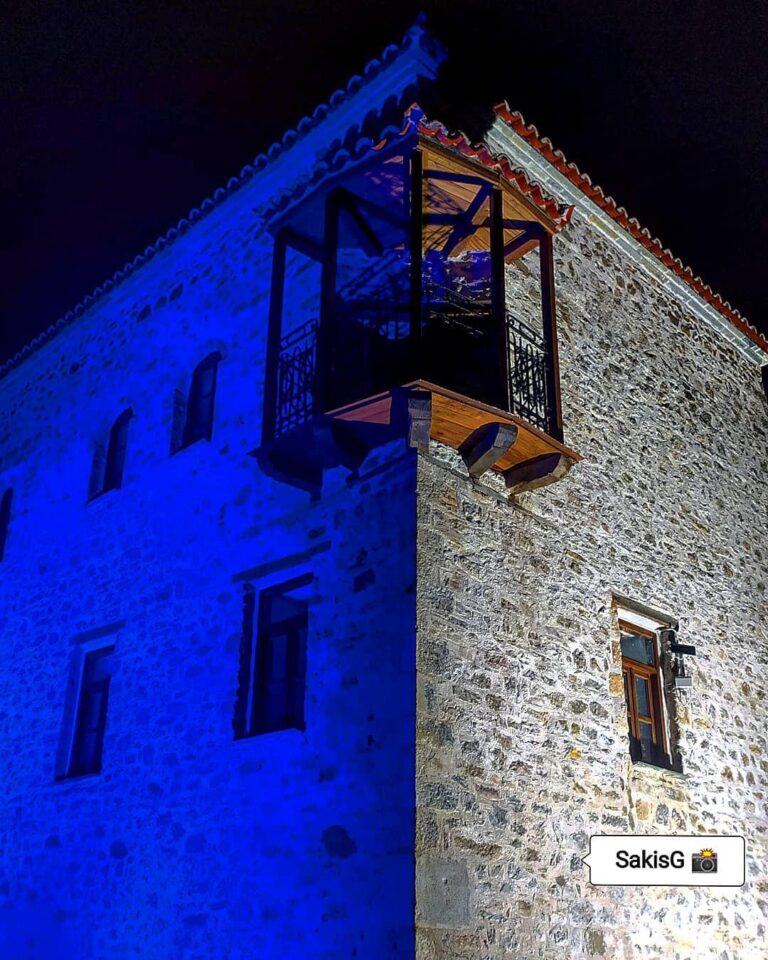
KARAMIHOS TOWER
The “Karamihos Tower”, the only surviving tower house of the Late Ottoman period in the town of Farsala, but also in the wider area, belongs to the category of “Koulia”. It is a solid, stone tower, which dominates the imposing ground on the slope of the area of Agios Georgios (Saint George) in the town of Farsala, with great views to all sides. It consists of a ground floor and two floors and is crowned with a four – pitched roof, bearing Byzantine tiles (the roof has almost completely collapsed today). There are two entrances to the building, which are blocked by wooden, double doors. One opens on the east side, is narrow, with dimensions 1.20 x 1.85m and leads to the “isolated” high ground floor, with three levels inside. The second, the main one, is located on the south side of the building, has dimensions 1.25 x 2.15m, saves the remains of a small roof’s metal base and leads to the first floor and through it to the second, with a wooden staircase. Most likely, in the initial phase of the tower’s construction, its entrances were secured with stronger doors.
STONE BELL STATION OF AGIOS NIKOLAOS
On the hill “Varousi”, is preserved the old metropolitan church of Agios Nikolaos of 1857, a three – aisled stone- built basilica, as well as the stone bell tower of 1884.
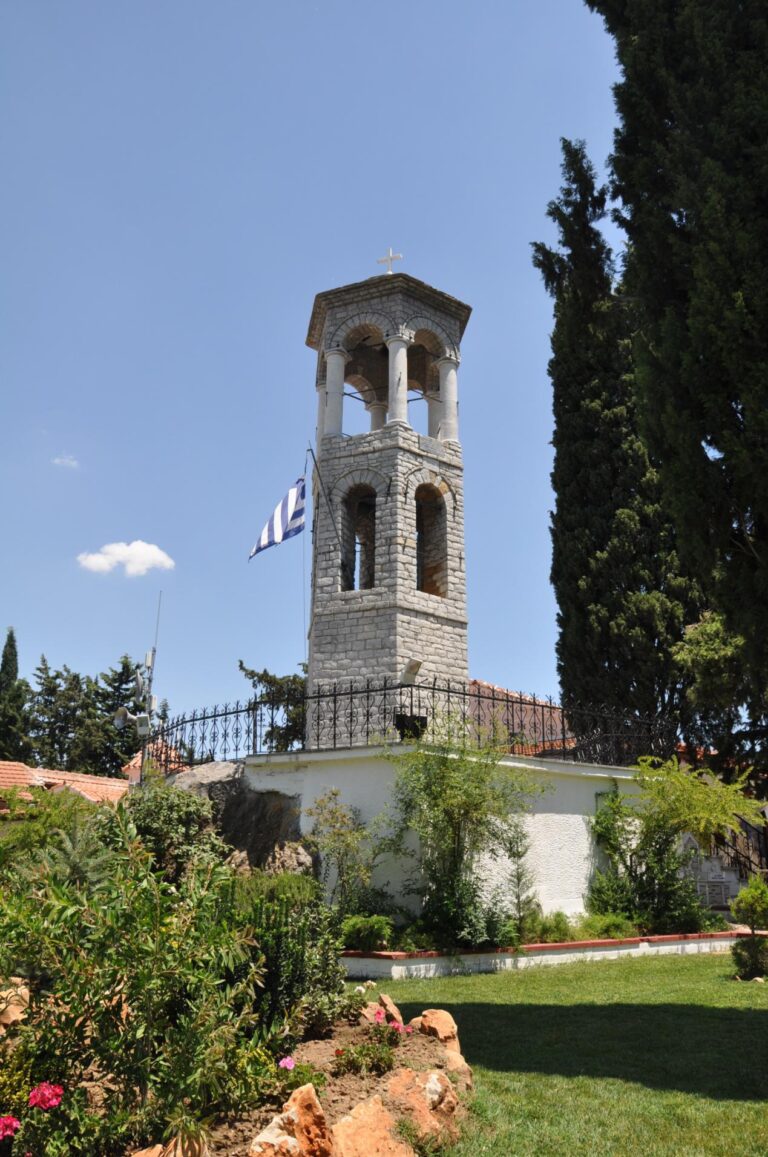
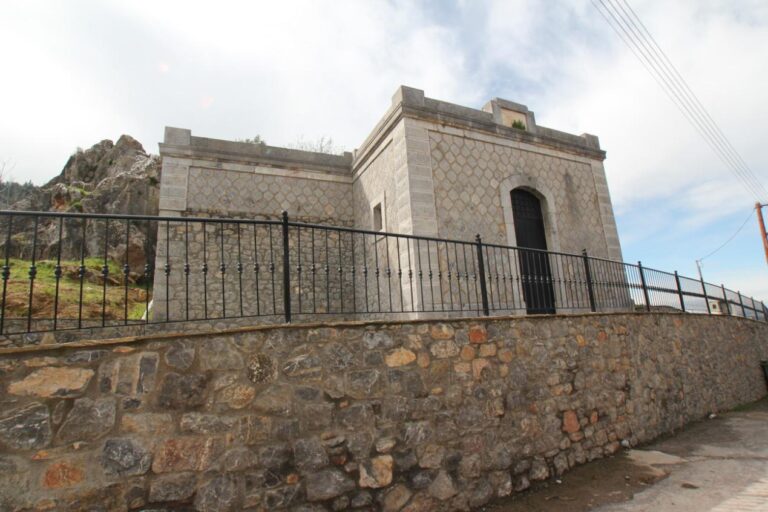
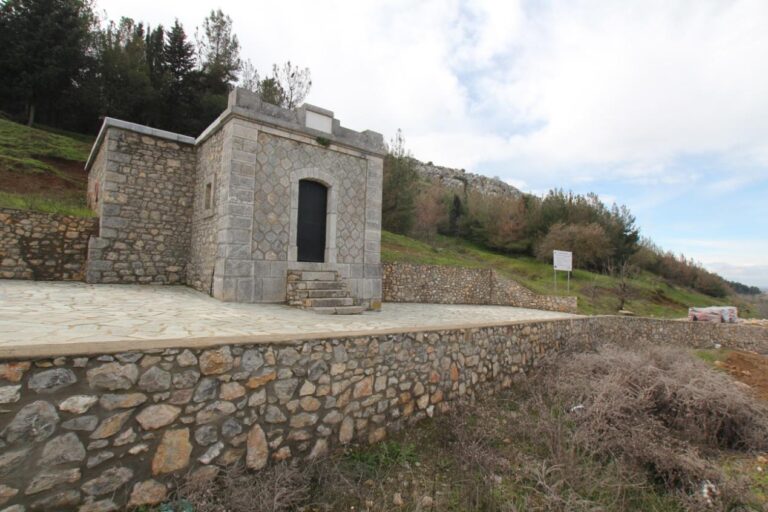
TRADITIONAL WATER TANKS IN VAROUSI
Until the liberation of Farsala from the Ottoman yoke in 1881, the city was supplied exclusively by water from wells and by transporting water in containers from nearby springs. The local authorities of the liberated city were very early concerned on the burning issue of its water supply. At the beginning of the 20th century, it was decided to build two water reservoirs (water tanks) in its eastern part, namely the area of Varousi, in order to modernize the water supply system and ensure access to running, clear water by all the inhabitants of the town. The construction of the water tanks was completed in 1910, during the mayoralty of Alexandros Kyrozis.
HALVA OF FARSALA
The most famous local product of the town of Farsala, which travels its name far beyond its borders, even far beyond the borders of Greece, it is of course halva. It is not known exactly when halva entered the region, but it seems that this probably happened at the end of 12th century, according to some researchers, whereas according to others, at the end of 14th century after the Ottoman invasion of Thessaly. The first confirmed historical facts reach us from 1446, with the will of the Turkish conqueror of Thessaly, Turhan Bey. This document mentions the workshop of the halva’s maker Khalil, located in Larissa, while reference is also made to the halva’s makers Isa, Siahi, and Khalil. The existence, in Larissa of 1446, of four halva’s makers is also pointed out by the Turkologists N. Beldicenu and P. Nasturel. Since the beginning of the 19th century, the town of Farsala has become famous for its halva, to such an extent that its name was strictly associated with it and the “soap” kind of halva is now called “Halva of Farsala”.
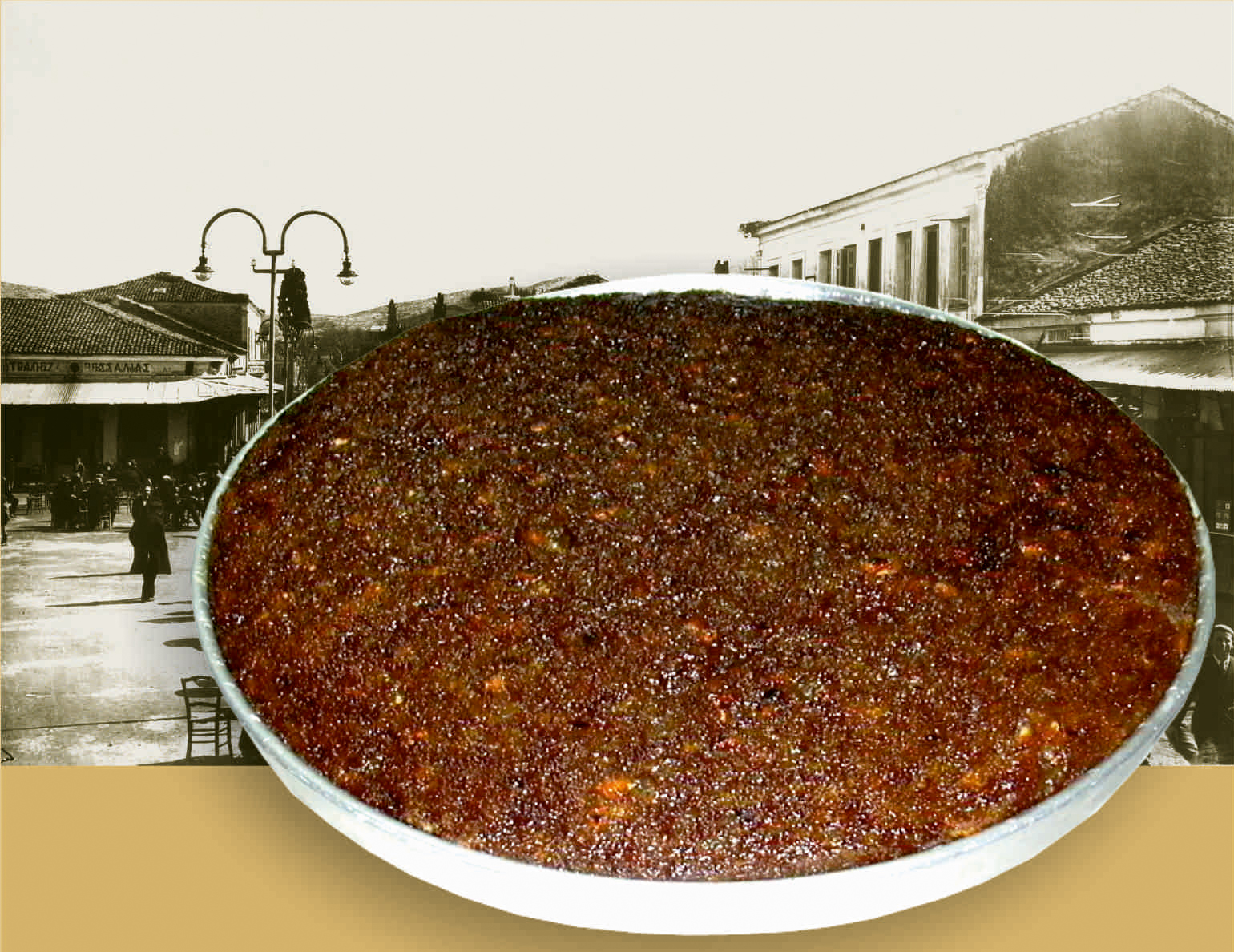
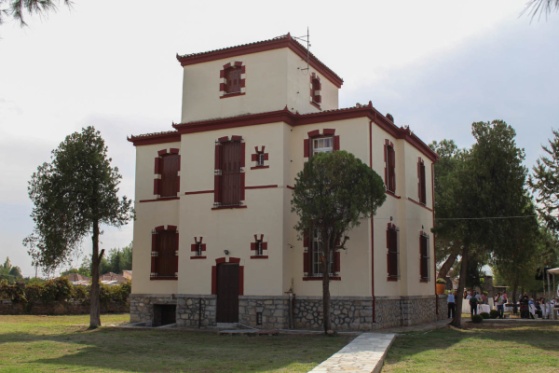
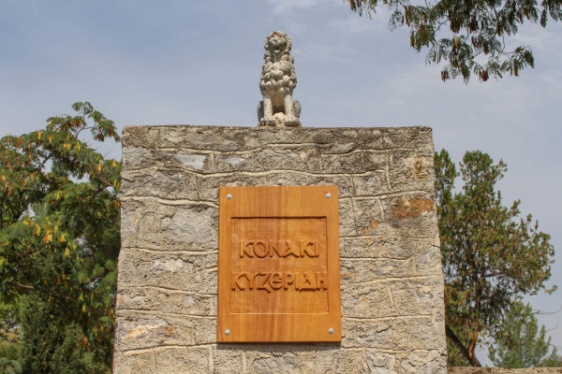
KYZERIDIS KONAKI
At the western end of the Municipality of Farsala, in the village of “Polineri”, rises one of the most characteristic buildings of the wider area of Farsala. This is the konaki of Harokopou, owned today by the diplomat – Professor Panagiotis Kyzeridis, a representative specimen of a farmer’s estate (“tsifliki”), which was designated a protected monument in 1999.
CHURCH OF VIRGIN MARY OF DEMERLI
In the village of Stavros in Farsala is located the post – Byzantine church of the 18th century, named Virgin Mary of Demerli. The name of the Temple is due to the Turkish name of the village Stavros, which was Demerli. According to the founding inscription, located above the southern entrance of the Temple, it was built in 1778 and hagiographed eight years later, at the expense of devout Christians with the assistance of their Holiness priests Rizos, Athanasios and churchwarden Gerapostolis, during the reign of Metropolitan Meletios the third of Larisa. The hagiography was done by students of the great hagiographer and scholar of Byzantine hagiography, Dionisis from Fourna, Evrytania. The mural decoration is arranged in three zones. The church houses the holy, miraculous icon of the Virgin Mary of Demerli, dimensions of 0.64 x 0.48m. According to the Holy tradition, it is believed that the above icon was hagiographed by the Evangelists Apostles Loukas.




